
Hopefully Home
craft · teach · live · grow


12 Creative Book Report Projects Your Students Will Love
Whether you’re teaching a whole-class novel, or finishing a round of independent reading or literature circles, post-reading assessments are always more engaging when they’re more than just a test or essay.
Below, you’ll discover a dozen fun book report ideas for your middle or high school ELA students, curated by a team of experienced English teachers.
Choose your favorite projects to offer to students as options on a book report project choice board.

Create a Board Game
When I gave “create a board game about the book you read” as a book report option for my students, I was pleasantly surprised at the results! Quite a few students excitedly chose this option and created some really fun-looking games centered on their books.
This is a great project choice if you’re looking for something that students can’t create by just Googling the book.
Here are some tips and suggestions for assigning a board game book report:
- Give clear parameters and requirements to keep students on track, such as requiring game elements to represent certain literary elements of the book they read.
- Provide suggestions for game components and materials – encourage students to consider the game play and elements of their favorite board games and to use materials they already have at home to create them.
- For a whole-class novel study, consider allowing students to work in teams to create the novel-based board games, then setting aside a class period for students to play each others’ games and see who wins!
If you’re looking to save time… clear directions handouts, lots of suggestions, and a handy grading rubric for a board game post-reading assessment are all included in this resource . Take a look!
For more independent reading response ideas, check out this post with ideas for fun post-reading projects.

Create a Journey Box
Engaging students in authentic conversations about books is a passion for Carolyn of Middle School Café . In traditional oral book reports, students simply get up in front of the class and read a summary of the book they read. Carolyn found this method of oral book reports painful for both her and her students.
Wanting to find a way to help her students talk about their book and keep her class engaged, Carolyn began incorporating Journey Box Book Reports. A journey box is a shoebox (or bag) that contains artifacts from the story that help the reader share important events from the story.
Students predetermine what events of the story are most important to share, then they create an artifact to share with the class or small group as they explain the plot. As an example, Carolyn had a student who read The Diary of Anne Frank. He created a small 3D tree that he displayed on the desk as he shared about how Anne looked out the window and dreamed of her former life. It’s a small piece of the story that helps the student explain the plot point and gives the audience something visual to look at and stay engaged.
Journey Box Book Reports have been successful for Carolyn in both her middle school and high school classrooms. She does suggest, if using Journey Boxes in older grades, to have students share their stories in small groups.

Create a Literary Food Truck
If there’s one thing kids love, it’s food – especially high schoolers – and with this in mind, one of Simply Ana P’s favorite ways to recap a class novel or an independent reading unit is with Literary Food Trucks. This is definitely not a new idea, but it’s one that will have you coming back for seconds 🙂
Ana first tried this project at the end of The Odyssey , where students were able to decide which book(s) they wanted to make the focus of their trucks. The main requirement was that every single choice made had to be intentional and clearly relevant. With this in mind, students could start the planning process.
You can make the truck’s requirements as simple or as detailed as you prefer, but Ana recommends having students plan:
- Truck name, design, and branding colors
- Menu design and items (5 items minimum)
- Employee uniforms
- Merch
Ana includes a writing component by having her students defend all of their selections in the form of a proposal. This is later used in their presentations, and the better (more intentional) their proposal is, the more likely they will win the class vote. This proposal can be anywhere from a few paragraphs to a few pages, depending on what writing goals you have for them, and should definitely include text evidence.
Part of the beauty of this type of project is that it can be done digital or paper-based. Ana likes to walk her students through a Canva tutorial, where there are even menu templates that students can use so they don’t feel overwhelmed starting from scratch. Or, for more creative students, they can create their trucks on chart paper, poster board, or even 3D dioramas. After students finish making their food trucks, it’s always fun to take a day for the in-class Food Festival, where students are invited to bring in items from their menus or simply some type of snacks. Some students get super hype about this day and even make/wear aprons or themed employee uniforms. Students are able to walk around, visiting each of their trucks, and casting their votes for Best Food, Most Relevant, and Most Detailed. Have fun and bon appetit !

Create a Mood Board
It can be hard to come up with creative post-reading assessments for your students when they’re done with a full class novel, literature circles, or a choice reading unit. In an attempt to combine 21 st century skills with literary analysis, Samantha from Samantha in Secondary decided to try something a little different. Enter: The Mood Board.
A mood board combines images to elicit a feeling from a viewer much like a writer does with words. The possibilities for using a mood board with your class are endless. Students can create a mood board for an overall book, a character, an event, a theme, a poem, etc. Then, have your students carefully curate a board that is aesthetically pleasing and considers color, space, and design in the execution. As students explain why they’ve made the choices they have, the upper-level thinking comes naturally.
Canva is an excellent tool to use to create your mood boards. Having students interact with software they may be unfamiliar with is a meaningful learning experience in and of itself. If you want to learn more about how to use mood boards in your own classroom, click here to read Samantha’s blog post about it or check out the resource she created that includes done-for-you student instructions, examples, and a rubric here .

Create a New App
How would a character’s life change if there was just the perfect app to solve their conflict??
This is the question Krista from @whimsyandrigor poses to her students as they finish a novel and begin to reflect on the character’s journey. Students begin by discussing all of the details surrounding the protagonist and what they experienced. In small groups and in whole-class discussions, students discuss the conflicts, both internal and external, and then brainstorm all of the realistic and not-so-realistic ways the character could have addressed their problems.
Once students have generated a healthy list of ideas, Krista tells them they get to become an app developer and they must create an app that would greatly benefit a character from their reading.
The requirements are:
- The app cannot already exist.
- The app can be totally unrealistic/not probable.
- The app developer must be able to explain how its features would benefit the character.
- The developer must also create an icon for the App Store.
Here is a print-and-go handout students use to get designing.
Here are some example apps students could create: to help Will from Jason Reynolds’s Long Way Down , maybe an app that predicts his future would help him decide what to do once he steps off the elevator. Or maybe Romeo from Shakespeare’s Romeo and Juliet would have benefited from a life-detection app that would accurately determine whether or not someone was actually dead.
When students sette on the conflict they want to address and the app that would help, they write a Spill the TEA paragraph, as explained by Krista in this YouTube video . Using this paragraph organization strategy, students will introduce their app, use evidence to explain how it is necessary for the character, and explain how the app would have benefited or changed the protagonist’s journey.
Now they get to be a graphic designer as they design the app’s icon. Students may want to peruse the actual App Store to get ideas about how an icon is designed, what elements must be present, and how to create something that is eye-catching.
If space allows, Krista encourages you to display the icons and Spill the TEA paragraphs in the hallway for other students to see the in-depth critical thinking and character analysis your students did after finishing a novel.
Who says technology is only a distraction for our students?! This activity proves technology can help students dive deep into a text and its characters!

Write a Vignette
Lesa from SmithTeaches9to12 often focuses on character-based activities for novel studies including a character profile activity , character conversations through text messages , or the writing of a good vignette.
Vignettes can be a great way to assess students’ literary analysis skills and understanding of the text. Students write a short piece of about 500 words that is descriptive of a particular moment in time focusing on one of the book’s characters. These moments could be placing the character in a new setting, writing about a particular moment in the story that was less developed, or even extending to a moment beyond the book’s conclusion. Lesa provides students with some mentor texts, including “My Name” by Sandra Cisneros in The House on Mango Street or “The Prisoner Van” by Charles Dickens in Sketches by Boz or even one from a novel being read in class. Review the stories for structure, language choice, sentence structure, use of figurative language, and so on. This helps to co-create the criteria for the assignment. Then students write their own vignette. Build in some peer review as an accountability piece and voila!

Create a Character Collage
It’s safe to say that most English teachers have a bin of cut-up magazines somewhere in their classrooms. While these tattered copies of People and Us Weekly have definitely seen better days, they live on in the many collage creations of our students.
Katie from Mochas and Markbooks loves to use collages as visual representations of comprehension. After reading a novel or short story, creating a character collage to show how a character has evolved from beginning to end requires students to use higher order thinking skills to analyze, synthesize and demonstrate their understanding of characterization by dividing their page in half and choosing words and images to represent the character at the start and conclusion of the story on each side.
The results will show the depth of your students’ interpretation of character as well as their ability to use critical and creative thinking skills to represent their knowledge.
Other ways to use this idea instead of showing character evolution are to show two different sides to a character, for example, who they are with different people in their lives.
If you are looking for other ways to incorporate collage and magazines into your post-reading assessments, check out this blog post for more ideas!

Design Shoe Charms
Crocs are not Olivia ’s shoe of choice, but when she noticed her students bedazzling their plastic footwear with shoe charms, it was a learning opportunity she just couldn’t pass up. Here’s how to make it work in your classroom:
First, have your students choose a character from the book they have finished reading. Then encourage them to find quotes from the book that reveal the character’s interests, values, or personality. Once they have found their quotes (she has her students find 4), tell them to design and color shoe charms that represent those interests, values, or personality traits. This helps students with inferencing, textual evidence, and even symbolism!
When your students have finished making their shoe charms, they can either tape the charms to their shoes for a fabulous, foot-themed fashion show, or they can glue them to a picture of a Croc for quirky classroom décor. Check out this Instagram post to see the charms Olivia’s students came up with!

Create a Movie Poster
When was the last time you went to the movies? Did you notice the posters along the way? If yes then you have walked down the movie studio promotional lane. Like trailers, studios create movie posters to grab the attention of movie-goers before they even enter the theater. Yes, you may have already purchased your movie ticket, but those posters were created for the future. After you finish watching Sonic 2 , what movie will you see next? You probably already pointed to that poster on the way into the theater and said, “That looks like it is going to be good. I want to see that!” As a post reading idea, Sharena from The Humble Bird Teacher has her students create movie posters based on the text read in class. This allows her to complete a formative assessment on what the students learned from the text. Before having her class create a movie poster, she shows them examples of posters from different genres such as drama, action, family-friendly, and comedy. Then she hands out a piece of construction paper and goes over the basic requirements. On the movie poster, the students are required to have their actors names or image (characters), the title of the movie, a visual (setting or symbol from the story), and a tagline, and a short two to three sentence summary of the movie. Once her students are finished with the assignment, she displays them outside the classroom, so the students can have their own movie studio promotional lane. If you are looking for more after reading ideas, click here .

Try Novel Engineering
Whether you’ve been hoping to collaborate with another department, or just really want to try something new, Novel Engineering is an amazing way to get students thinking outside of the box ! Staci from Donut Lovin’ Teacher has found that Novel Engineering requires students to actively comprehend and interact with a novel and get creative about how to help improve the lives of characters! Basically, students work to create a product that will help solve a character’s problem. Here’s how it works…
Before reading : Choose a narrative text where the character faces tangible conflicts. Model and practice the design process in small ways. Try using picture books like Mucha! Muncha! Mucha! in order for students to see and practice what they’ll be doing with a text at grade-level.
While reading : Emphasize the conflicts characters face and give students time to brainstorm possible products that would help solve said problem. Make sure students record evidence from the text so they can later justify the need for the product they design.
After reading : Give students time to draft, craft, and improve their designs that will help solve a problem faced by a character. You can give students options where they draw their creation, make their creation, or even plan a digital app like this, depending on time and resources. Whatever you choose, students will be sure to be pushed to use some skills they may not always practice in an ELA classroom!
Staci has some FREE Novel Engineering Digital Planning Pages or you can read more about her experience with novel engineering on the Donut Lovin’ Teacher blog .

Create a Tik Tok Video
How many times have you passed a group of students filming a TikTok in a hallway? Have you had students ask to film in your class once they finish assignments? You are not alone. Students love TikTok and Yaddy from Yaddy’s Room has figured out how to get students using TikTok for academic purposes!
Yaddy likes to challenge students to create TikTok videos that track a character’s development, encapsulates the main theme of the story, or that exemplifies a key conflict. These easy, low stress videos are great at getting even reluctant students to participate.
To incorporate TikTok videos as a means of assessing students after a novel or story, try the following steps:
1) Get students to brainstorm which part of the novel they would like to use for their video.
2) Ask students to start combing TikTok for an audio that fits with the portion of the text they chose
3) Ask them to plan out how they will realize their vision
4) Rehearse and film!
5) Bonus: ask students to upload their videos to Google Drive and share the link with you so that you can make QR codes to post around your classroom!
Want to get started using TikTok videos for book reports? Check on Yaddy’s free planning sheet here !
Published by admin
View all posts by admin
I'd love to hear from you! Cancel reply
Find something you liked share the love.
- BookWidgets Teacher Blog
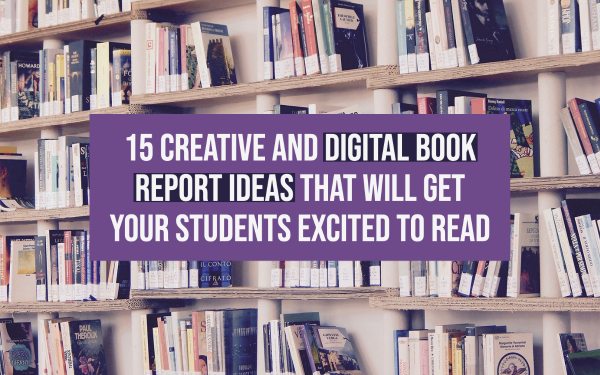
15 Creative and digital book report ideas that will get your students excited to read

Not all students are excited to read a book. So how can you make reading a book more engaging and fun? This is a huge challenge for most teachers, so I hope I can help you out!
Here’s what you’ll find in this blog post (click on the title if you want to jump to the section directly)
5 tips to get your students excited about reading
- 15 creative and digital book report lesson plans (free & ready to use!)
- The complete collection of book report lesson ideas in one assignment (your students get to choose!)
Instructions on how to use these digital book report lesson activities
Before you dive into the book reports, you have to get your students excited about reading first. In this previous post about reading, I’ve listed 10 tips that will encourage your students to read . I’ve come up with 5 more amazing tips! Here we go:
1. Use AR apps

Here are a few apps with amazing storylines and AR books.
- Wonderscope , for example, is an excellent storytelling tool. It uses augmented reality to transform ordinary places into real-time stories. Students also learn to read with the app. They ask questions to the characters in the story and listen to the characters’ answers.
- The Ghostkeeper’s journal and field guide : This book is an immersive adventure for readers aged 10 and up, offering several AR experiences to enhance the storyline. These are accessed via a mobile app “ Ghost-o-Matic ”.
- Bookful creates an engaging reading experience and brings stories and characters in books to life. The app holds the world’s largest 3D/AR library with hundreds of titles from leading publishers and brands such as: The Tale of Peter Rabbit, DK’s Encyclopedia, and children’s favorites such as Barbie, My Little Pony, Thomas & Friends, Transformers, and The Smurfs.
2. Escape lessons

Here are 3 fun ready-to-use escape lessons to spark your students’ joy of reading:
- A Halloween Murder : Let your students investigate the murder of the victim: Brat Spook. When they find the murderer, they get their “inspector” badge. Let them look for evidence in the murder scene, talk to suspects, analyze lab results, and so on!
- Finding Rudolph : Save Christmas by helping Santa find back Rudolph. Students go through different challenges, talk to eye-witnesses, and follow Rudolph through a winter maze, so Santa can deliver all the presents to the children.
- Easter Bunny Substitute : Can your students find a good Easter Bunny replacement? In the last breakout game for the classroom, the Easter Bunny is hurt, so your students need to interview the possible applicants and take tests to replace the Easter Bunny themselves. If they succeed in the challenges, they get an Easter Bunny substitute badge.
3. Storytelling

If you bring cultural elements into your lessons by telling a story, your students will be more eager to learn. Storytelling makes students want to “live the story”. And they do this by reading it. If your story is strong enough, your students will love learning and reading. They will even remember the lesson content better.
Here’s a fun & ready-to-use example: The life of William Shakespeare
4. First chapters

5. Books & sleepovers

You can even add different parts to your sleepover. For example, let students read their favorite passage in a book of choice out loud, and 1 hour before bedtime, all your students take their book and read in silence. Or how about creating cozy themed corners? Fantasy, science fiction, detectives,… When your students are reading in themed corners, they get the full experience. They can even dress up as a character in their book whilst reading.
15 Creative and digital book report lesson plans
Step 1: Get your students excited about reading. ✅ Step 2: make sure they don’t lose their interest when you’re announcing the book report assignment! ☑️ This part can be demotivating.
As the lower grade students often still get fun book report assignments, the higher grade students often get a dull worksheet where they have to describe the characters and give a summary. Change up your book report assignments with these creative, free & ready-to-use lesson ideas.
Take a look at all these ready-to-use and free digital book report activities. They’re all made with BookWidgets . You can even make exercises like these yourself in your own BookWidgets account.
Keep on reading to find out how to use these exercises in your lessons.
How did your students experience the book? Let them fill the glasses with drawings of the storyline/the book. The glasses represent the view of the students. Students can get really creative and use the toolbar at the bottom to draw and type.
You can ask your students to present their book report artworks to the other students as well. This way, your students can explain what’s on their drawing.
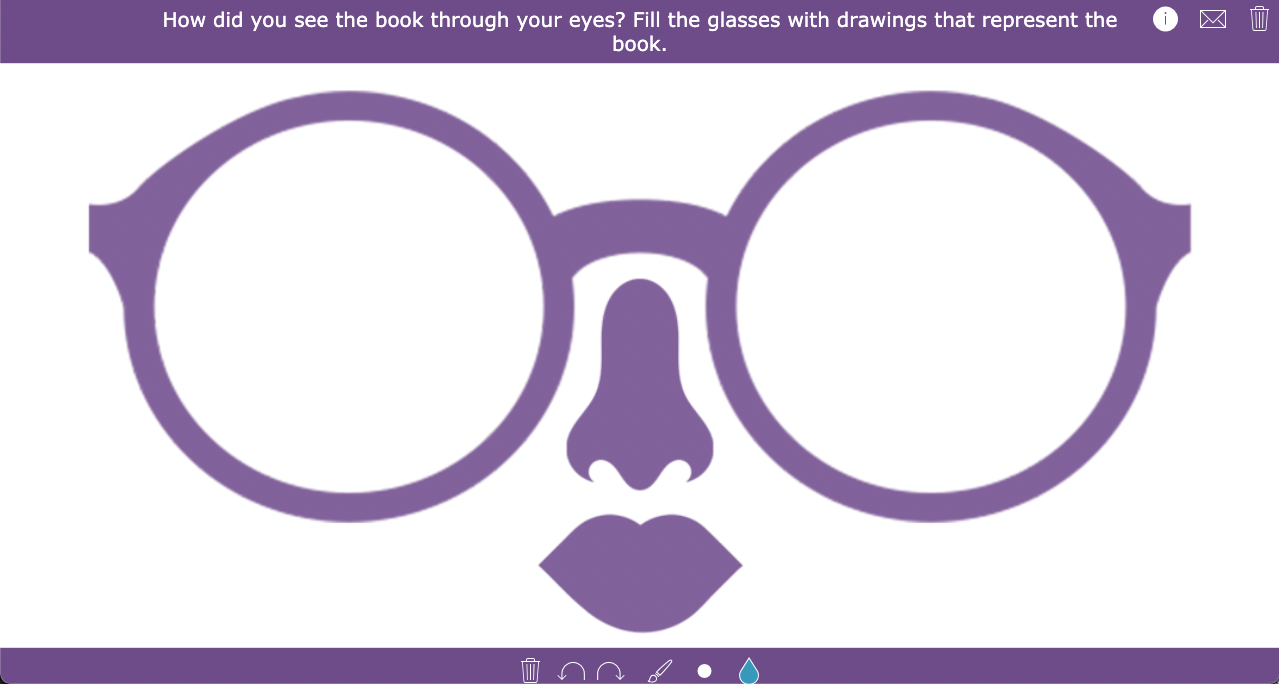
2. Bookworm
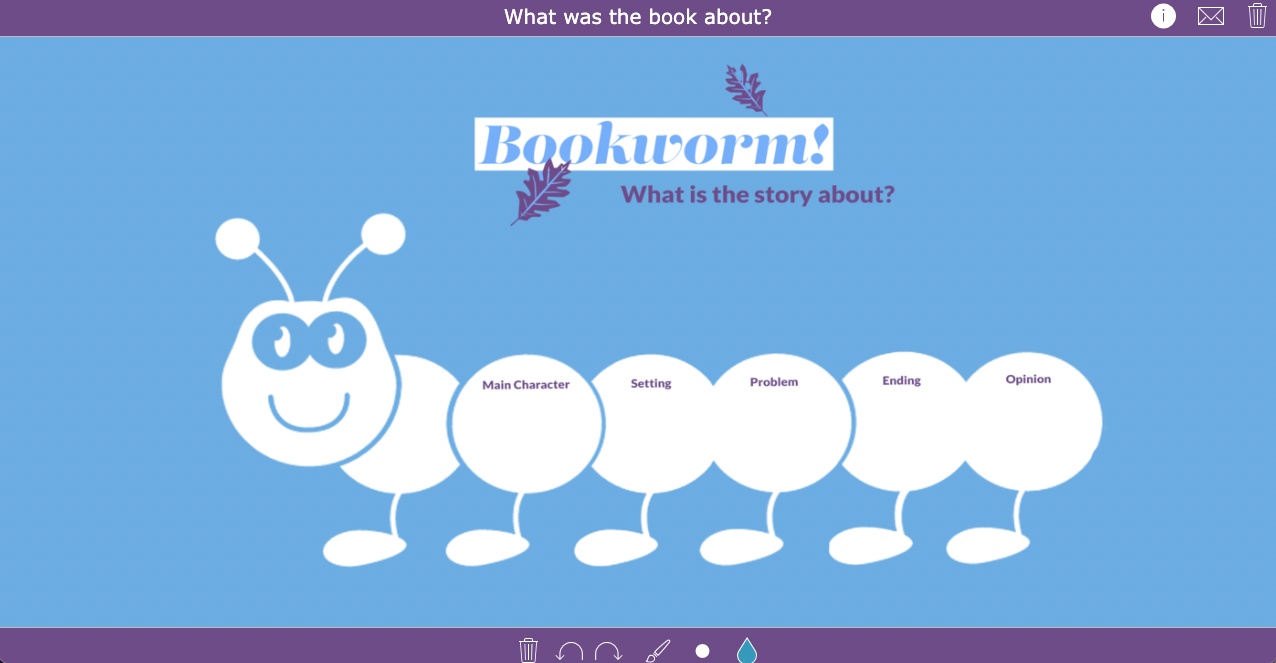
3. Timeline
This interactive book report asks your students to create a timeline of the story. When did what happen, chronologically? The have to add the biggest events in the story to the timeline.
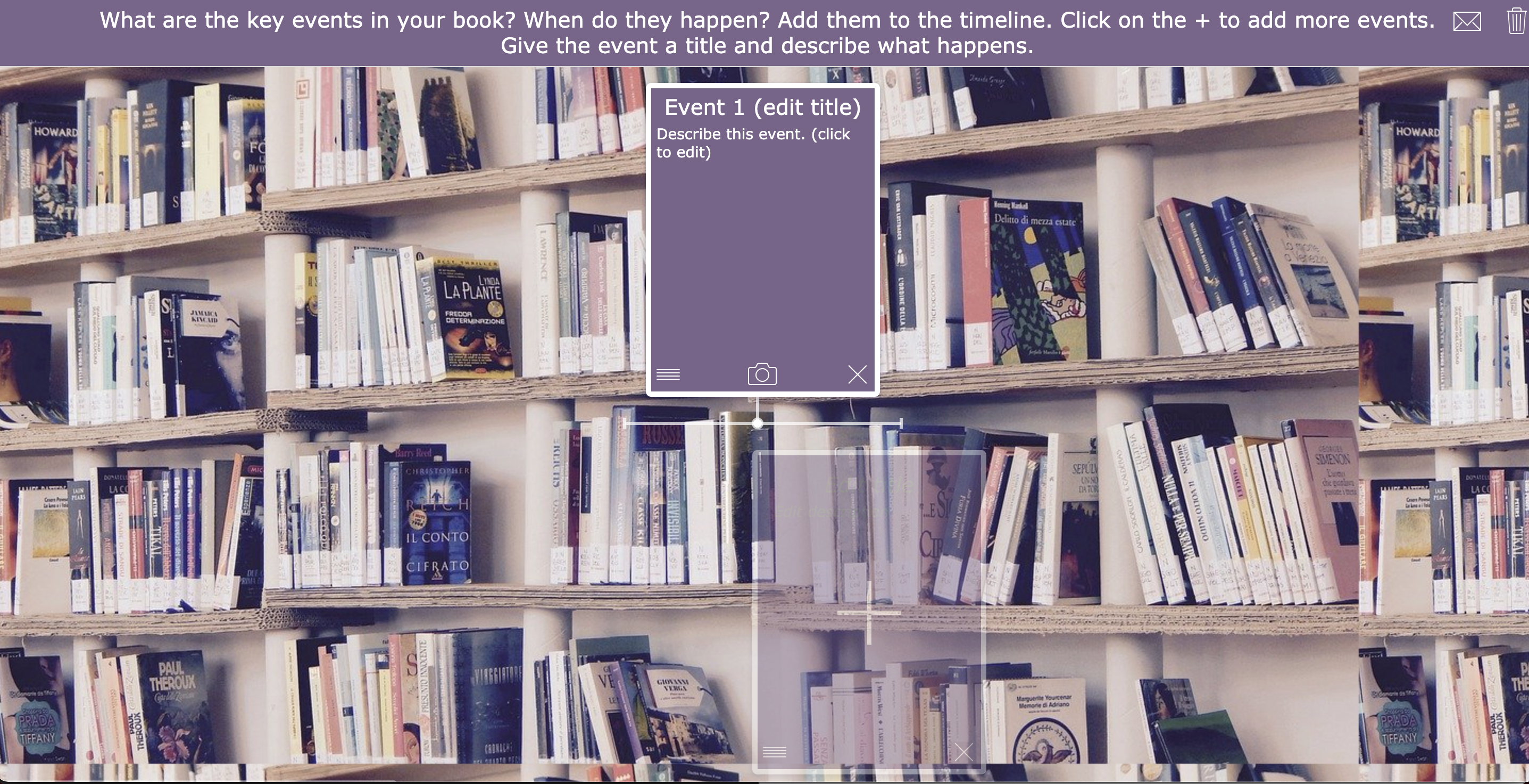
4. Comic book
In this book report exercise, your students have to write a comic book based upon the book they’ve just read. When they click on the “start” icon, they can choose fitting text balloons to go with their story.
Here are three other fun websites that let students create comic books: Storyboard That , Comic Life , and Toonytool . They already give you creative templates and drawings. This is a bit easier for students. This way, they don’t have to start from scratch.
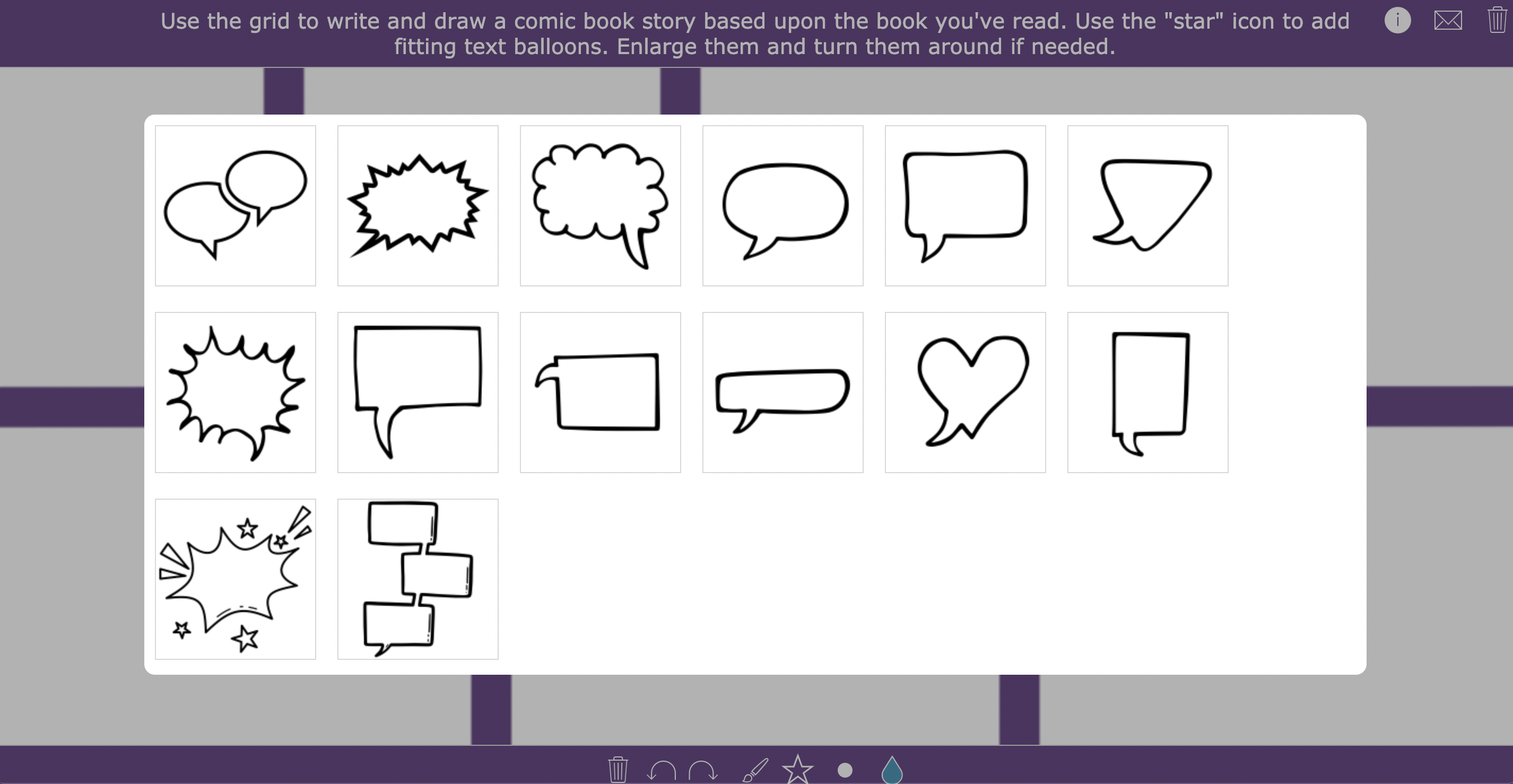
5. Character portrait
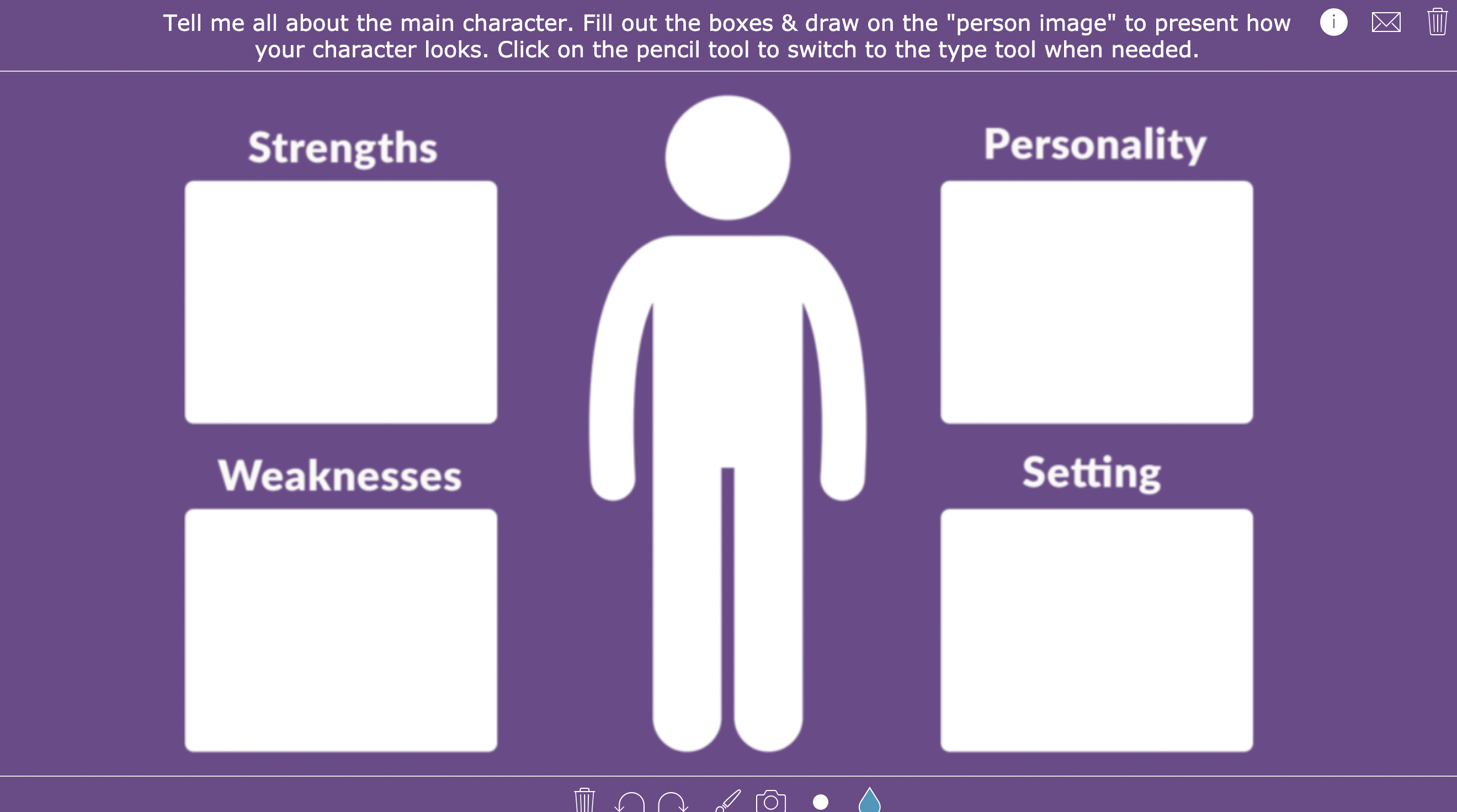
6. Randomness task
Just… add a little spice. I’ve turned the ordinary book report task, where students have to describe characters, the setting, plot, etc., into an exciting one. Your students don’t know yet what they’ll have to describe. They spin the randomness wheel and their task appears. The fun thing about this one is that all of your students will write a different book report.
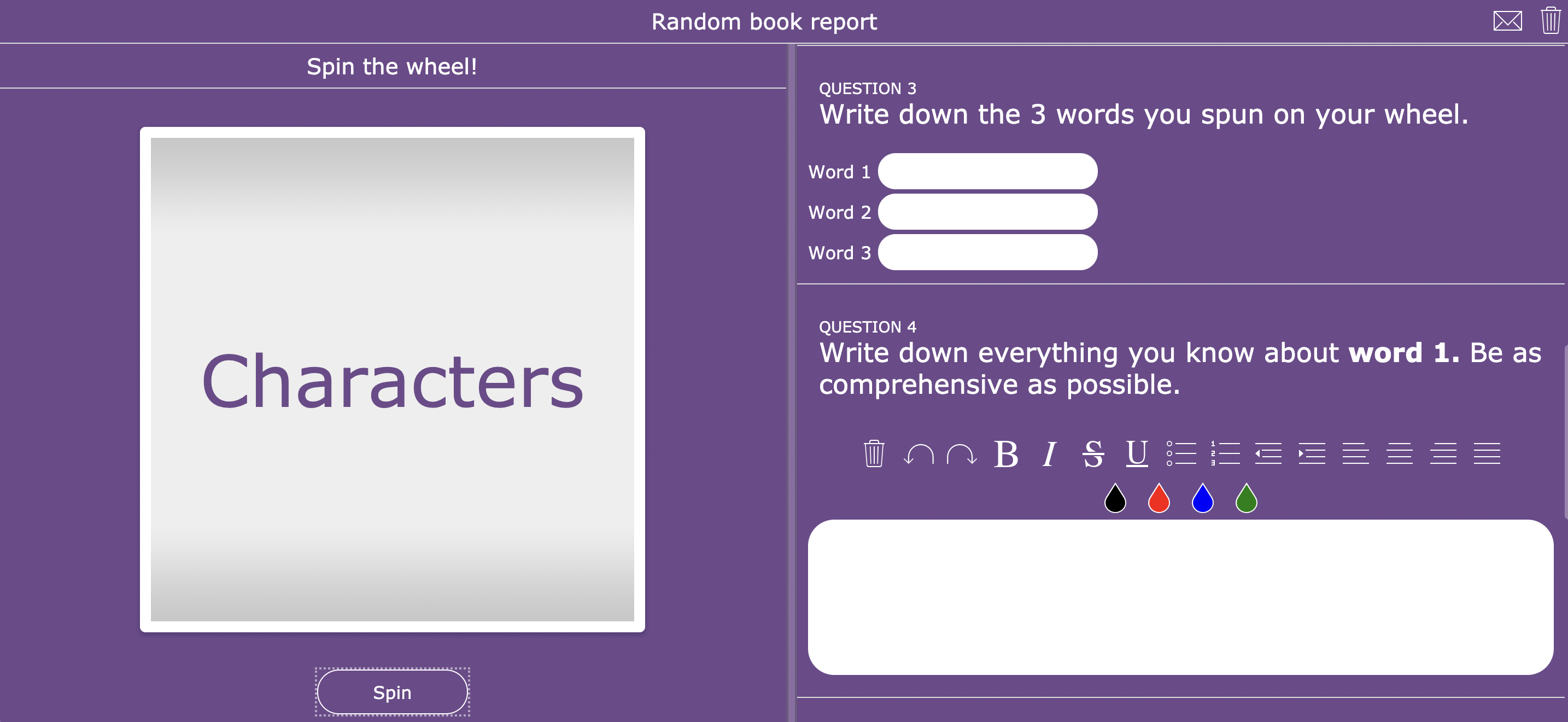
7. Book cover
Here, students get to be creative and invent their own book cover (front and back) of the book they just read. Or maybe just a cover for of a piece of text you’ve read out loud. They can use the whiteboard tools: pencil, type tool, switch colors, add images, etc.
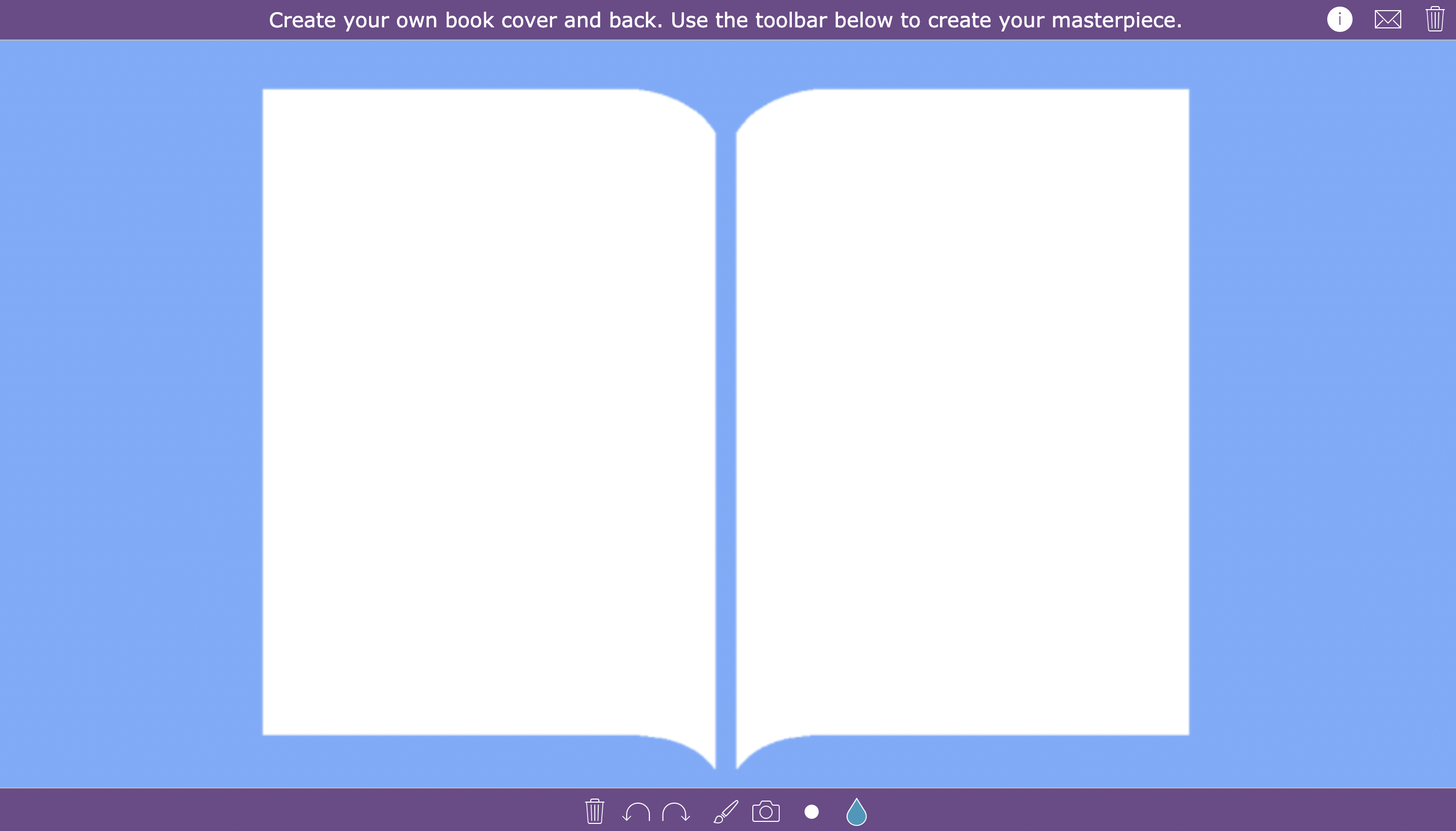
8. Character family tree
This digital mind map exercise allows your students to add boxes with text and connect them to each other. This is perfect for a book report activity focusing on the characters in their book.
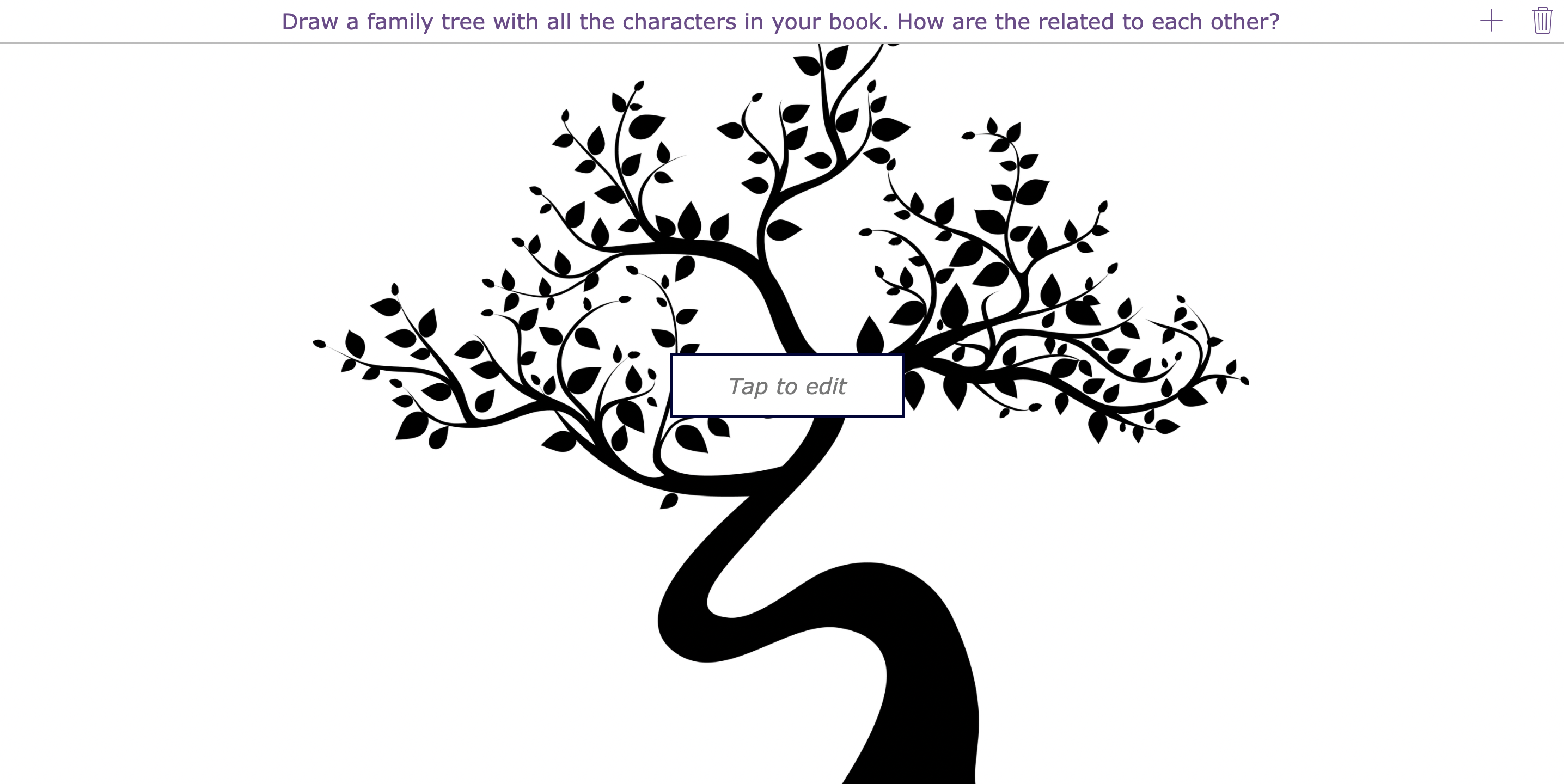
9. Facebook Profile
Modern days call for modern book report lesson ideas. Image the main character having a Facebook profile. What would be on it? That’s exactly what your students have to figure out here. Create a Facebook profile about the main character.
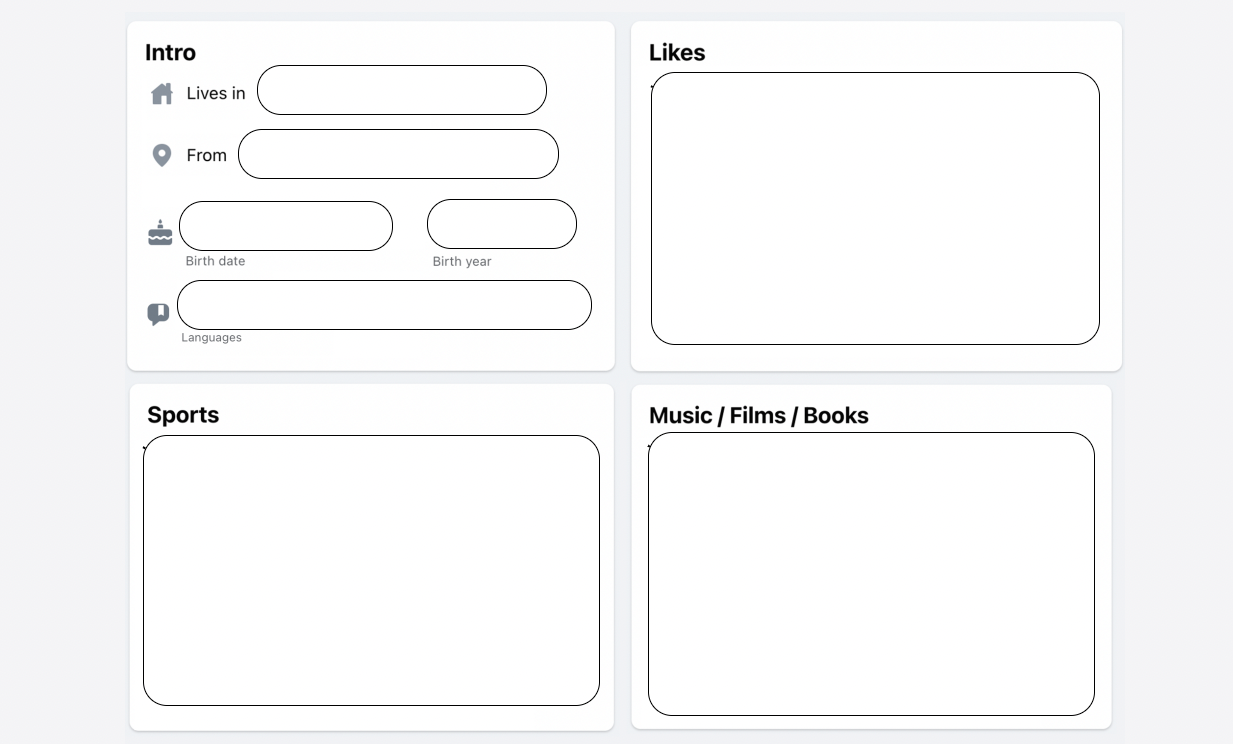
10. Book Collage
Here, students have to add 10 pictures or images that have to do with the book. They can do so by clicking on the photo icon and adding images into their collage.
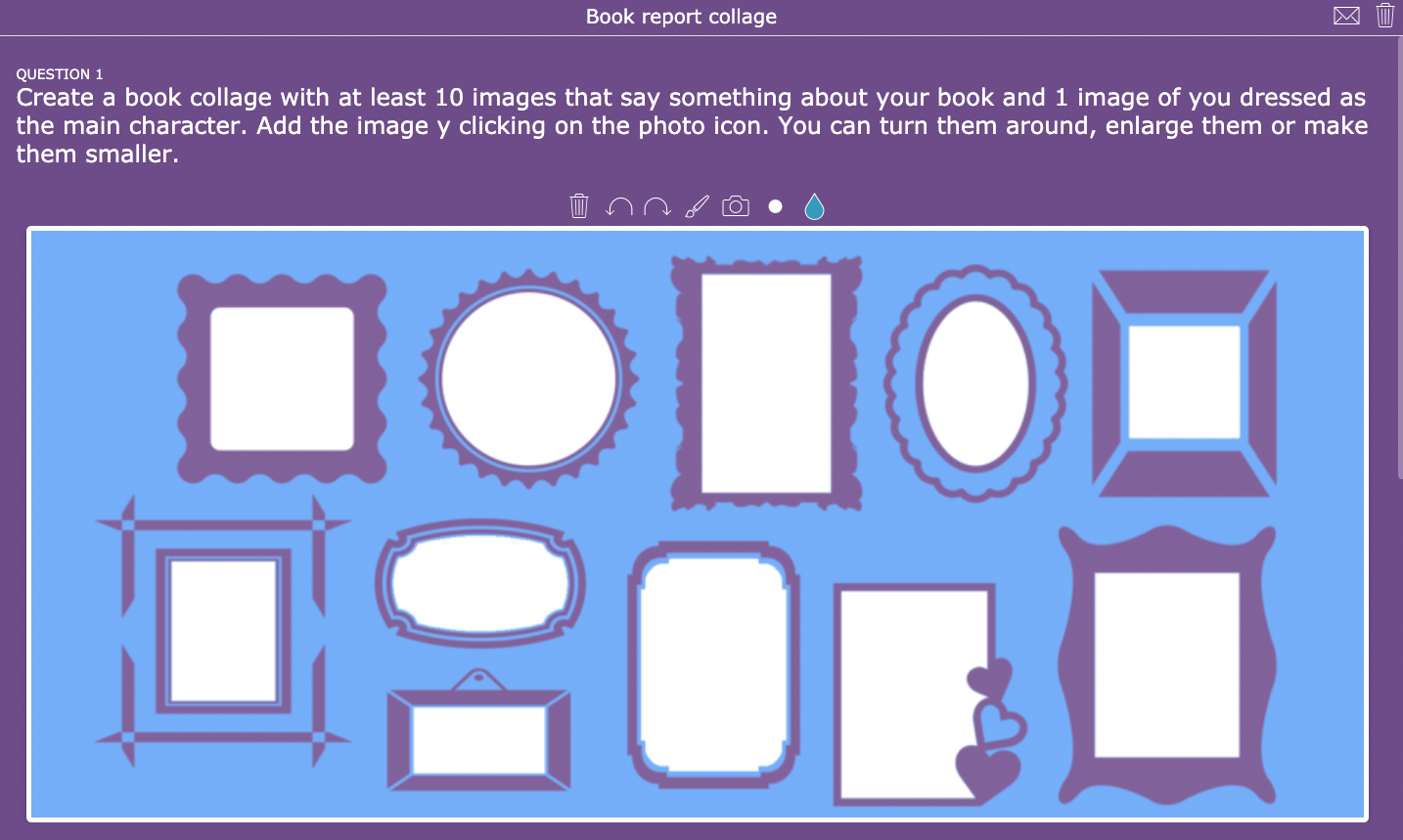
11. Mirror selfie
In this creative book report, students have to dress up like the character in their book, including holding 3 attributes that refer to the personality of the main character. They have to take a picture or mirror selfie of themselves dressed up, and add that picture to the whiteboard. You can ask them to come forward and present their images and explain why they’ve chosen those specific attributes.
The fun thing about all of these exercises is that they work on smartphones as well. So in this case, students can just open the exercise on their smartphones, take a mirror selfie with their phones and add it to the mirror in the digital whiteboard exercise.
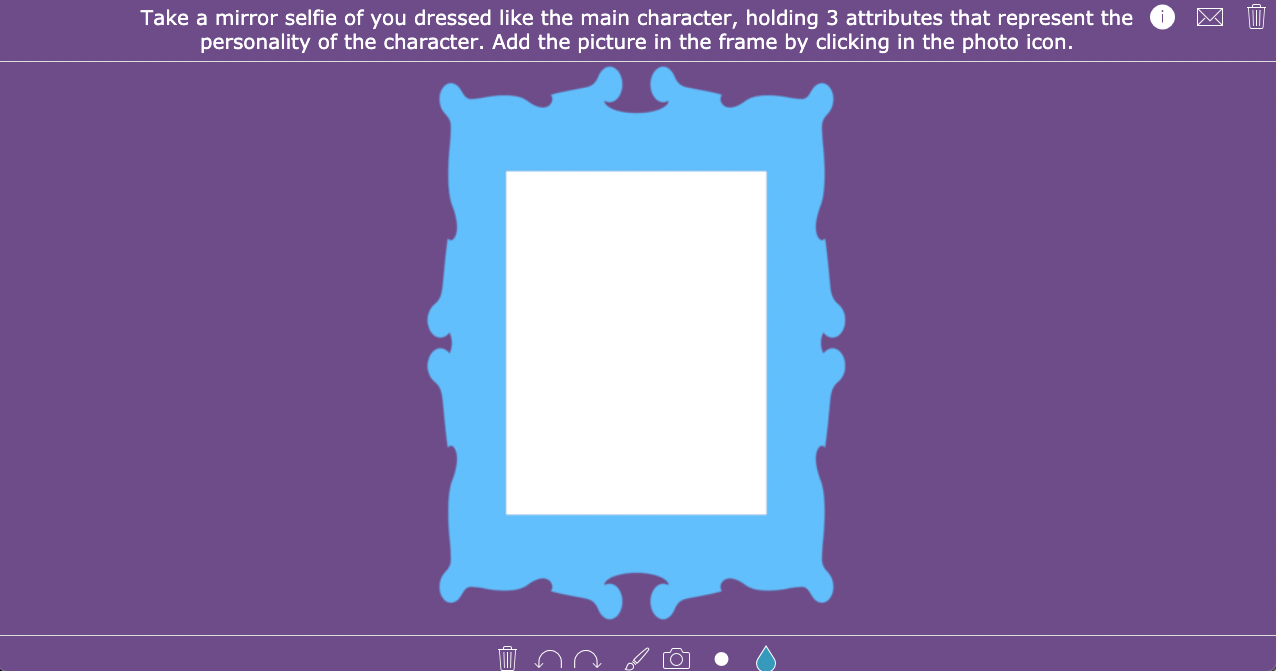
12. Email to the author
Your students have the chance to write a friendly email or letter to the author of the book they just read. Students have to share:
- their opinion;
- the character in the book they liked most, and why;
- their favorite part of the book and why;
- questions that they have about the book.
If you have an email address of the author, ask your students to submit their works to you, the teacher, first. After having given feedback on their letters, they can make some changes and send it over to the author.
If you have the author’s postal address, it’s much more fun to write a classic letter.
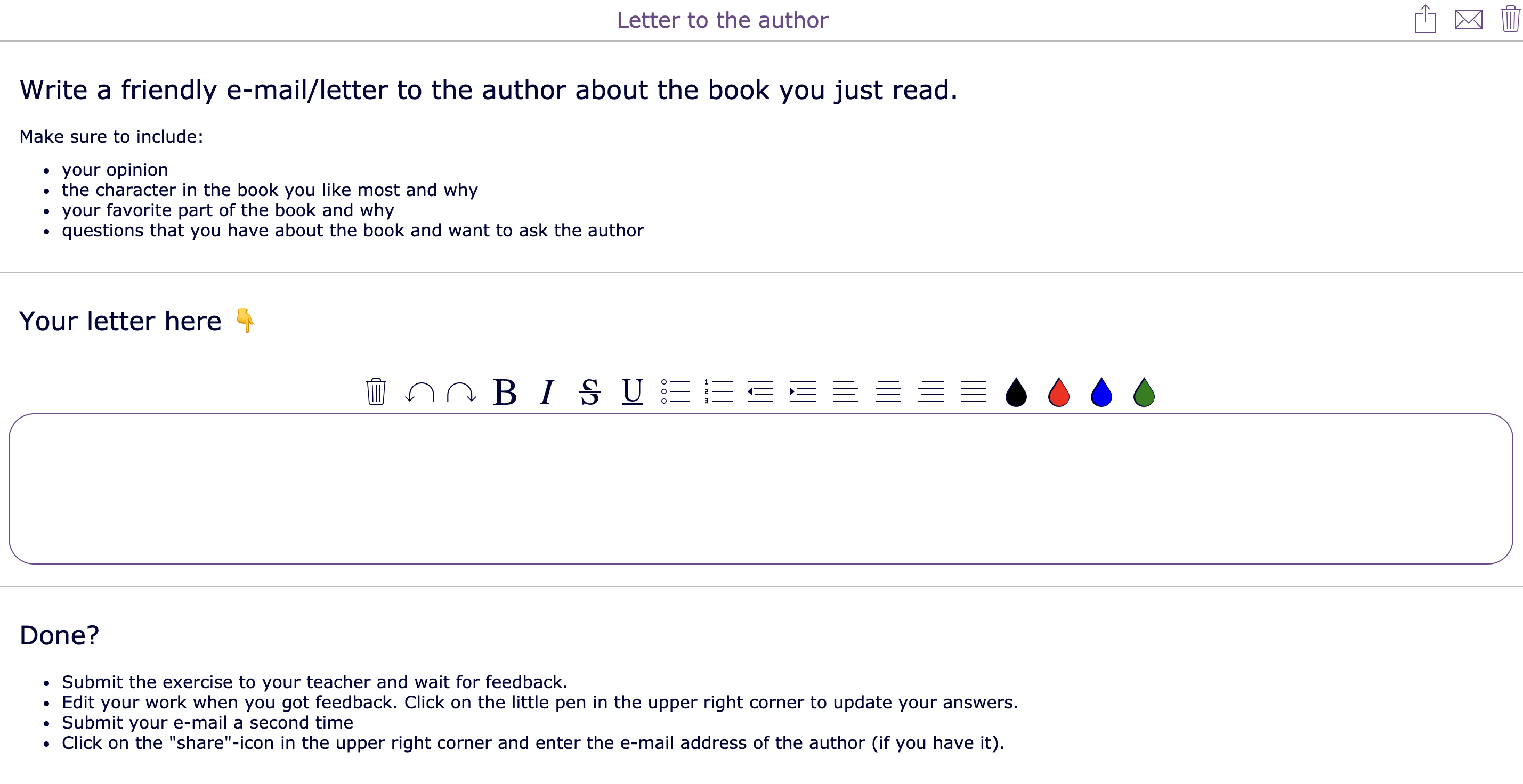
13. Conversation between characters
There is something called a “texting thumb” or a “smartphone pinky”. This shows that students like to send texts. A lot of them. So why not include it in your book report lesson plan? In this digital book report, students have to invent a conversation between two characters in their book.
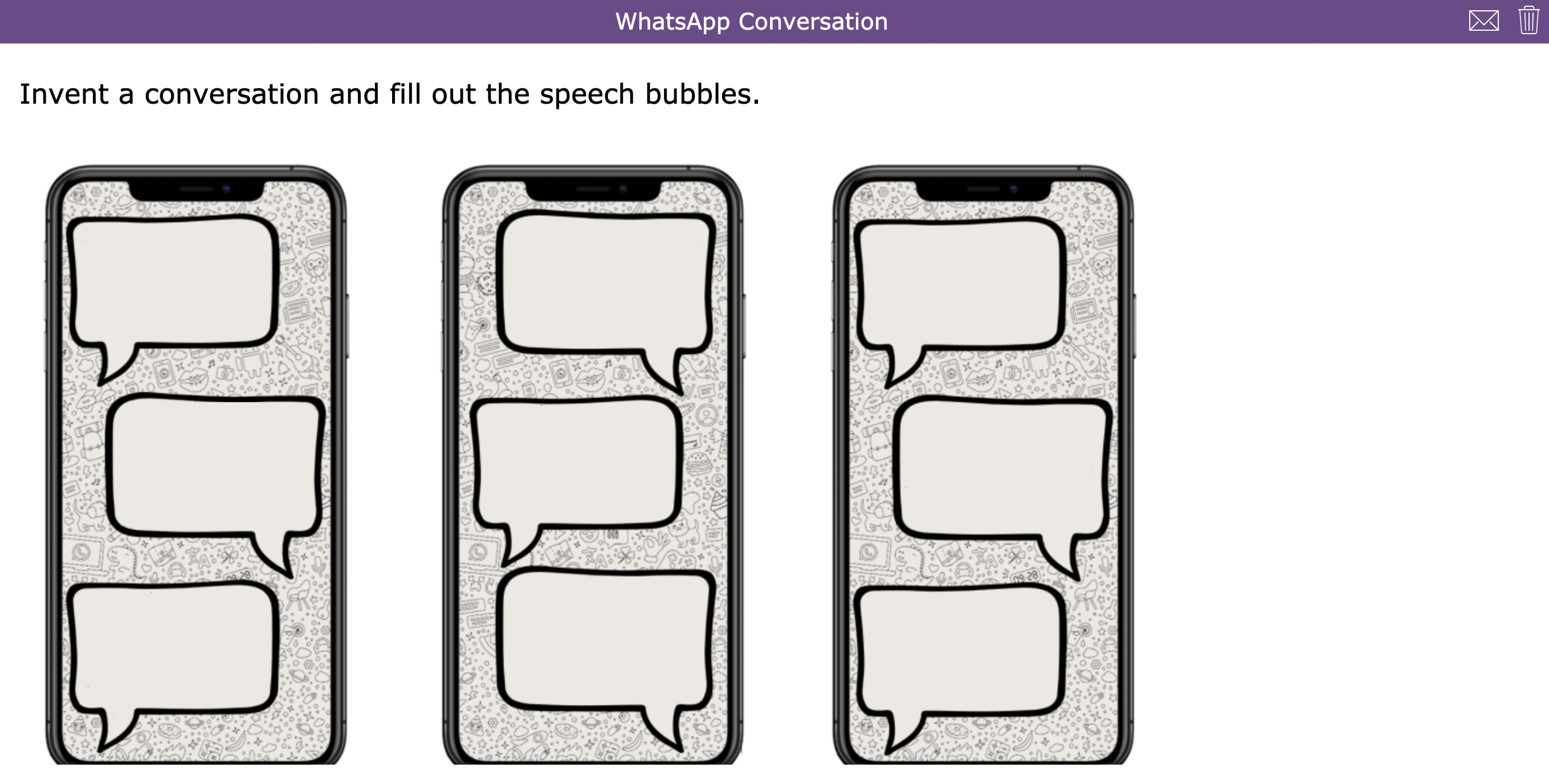
14. Movie vs. Book
A lot of books have a movie version too. If your students choose a book that also has a movie, it’s interesting to let your students make a comparison. With this book report exercise, you’re also sure your students actually read the book instead of just watching the movie and write a summary of the movie and not the book.
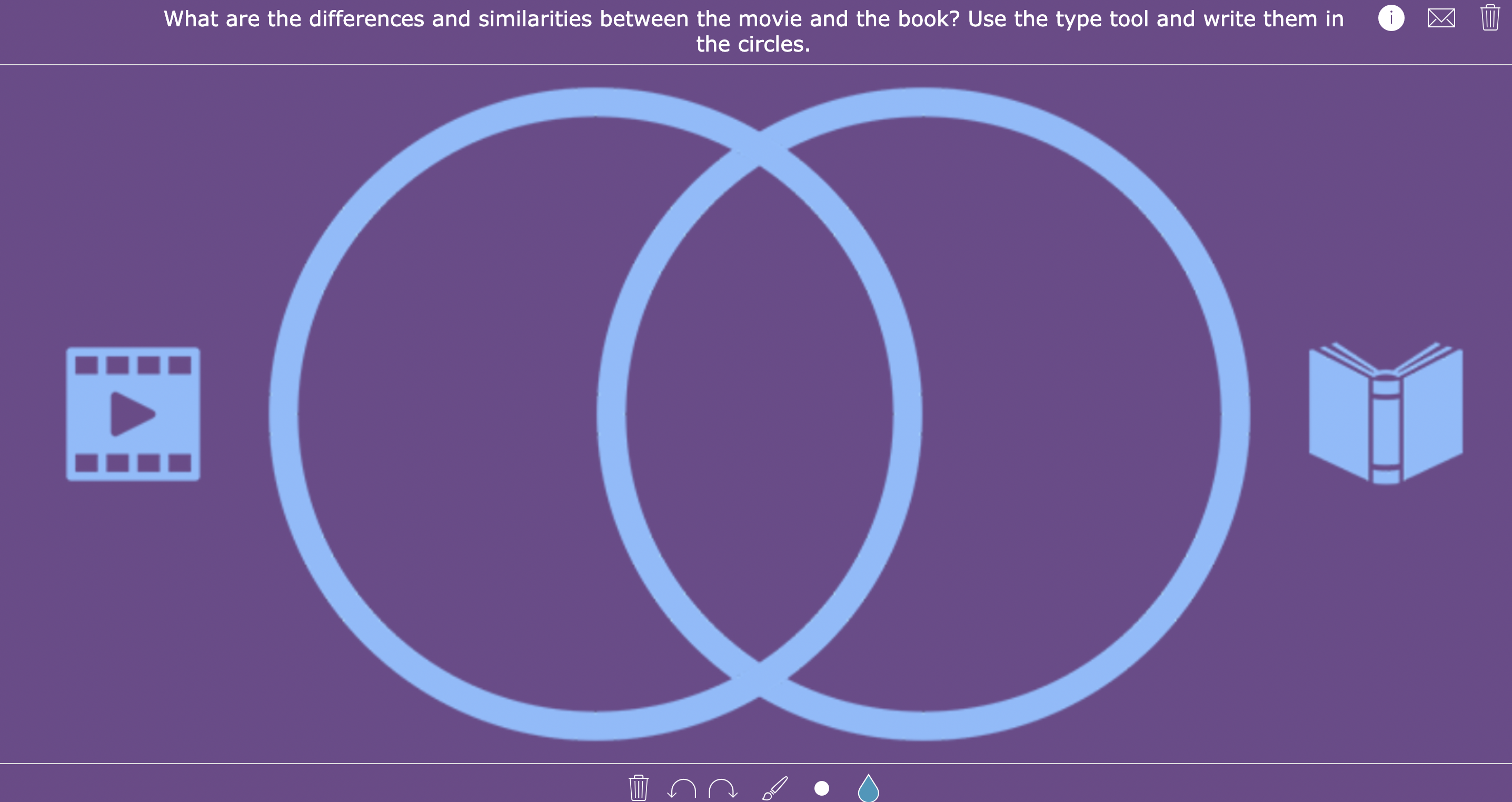
15. Emoji summary
The last exercise is also one students can relate to. Nowadays, we use emojis after almost every sentence when we’re communicating with friends. Emojis also have a strong meaning and can be used to express feelings or say something without actually saying it.
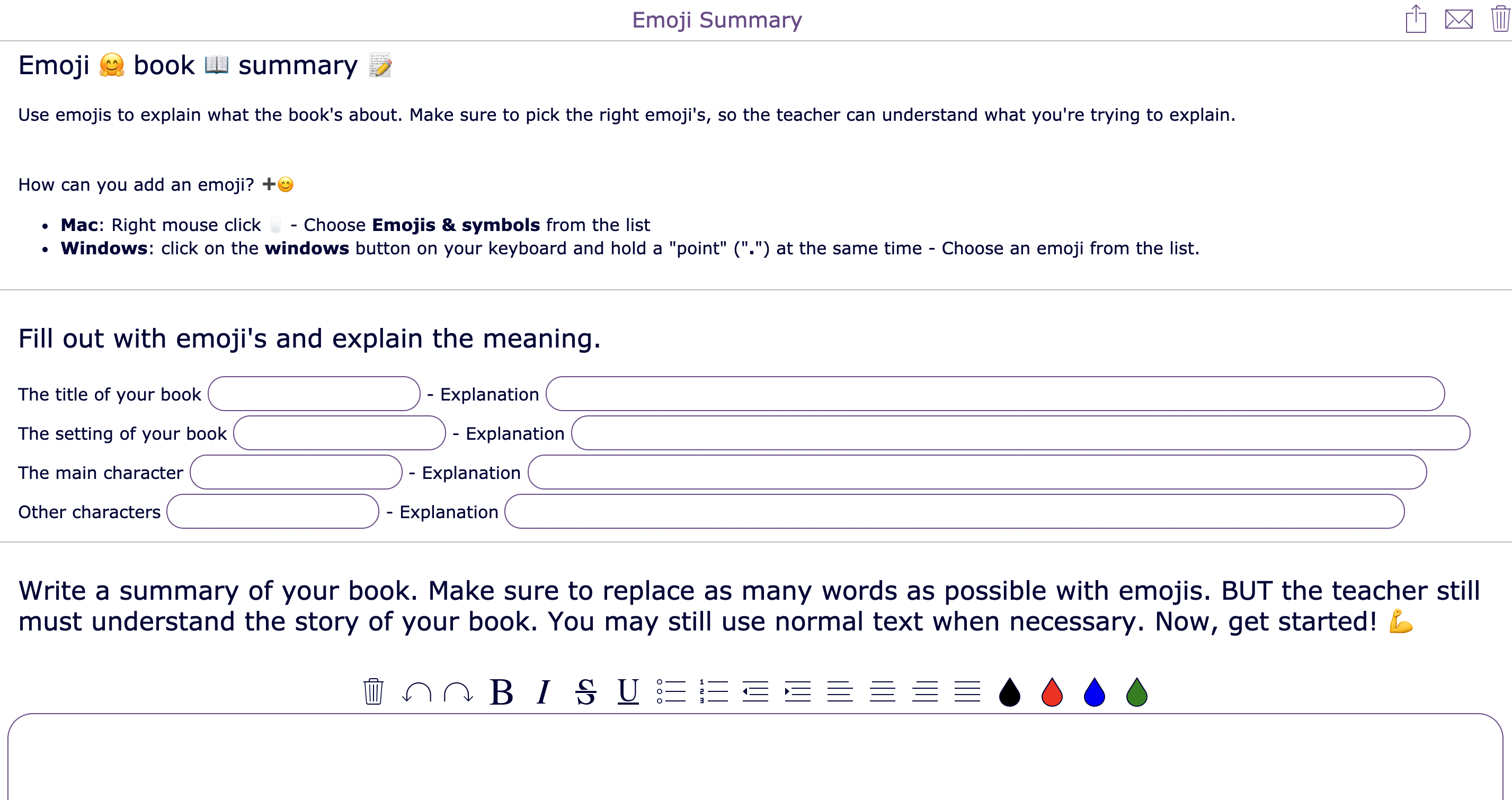
The complete collection of book report lesson ideas in one assignment
All these book report exercises are so much fun and yet they don’t take up a lot of time. Perhaps they just ask your students to only describe a certain part about the book. Cue… the planner widget.
With this type of BookWidgets activity, you can combine several lessons into one. You can let your students take matters into their own hands and choose which book report activities they’d like to finish.
It’s actually pretty easy. Your students read the instructions in the instructions widget and then start adding at least three book report activities to their planner. They finish the activities, submit them to their teacher, check off their planner, and that’s it!
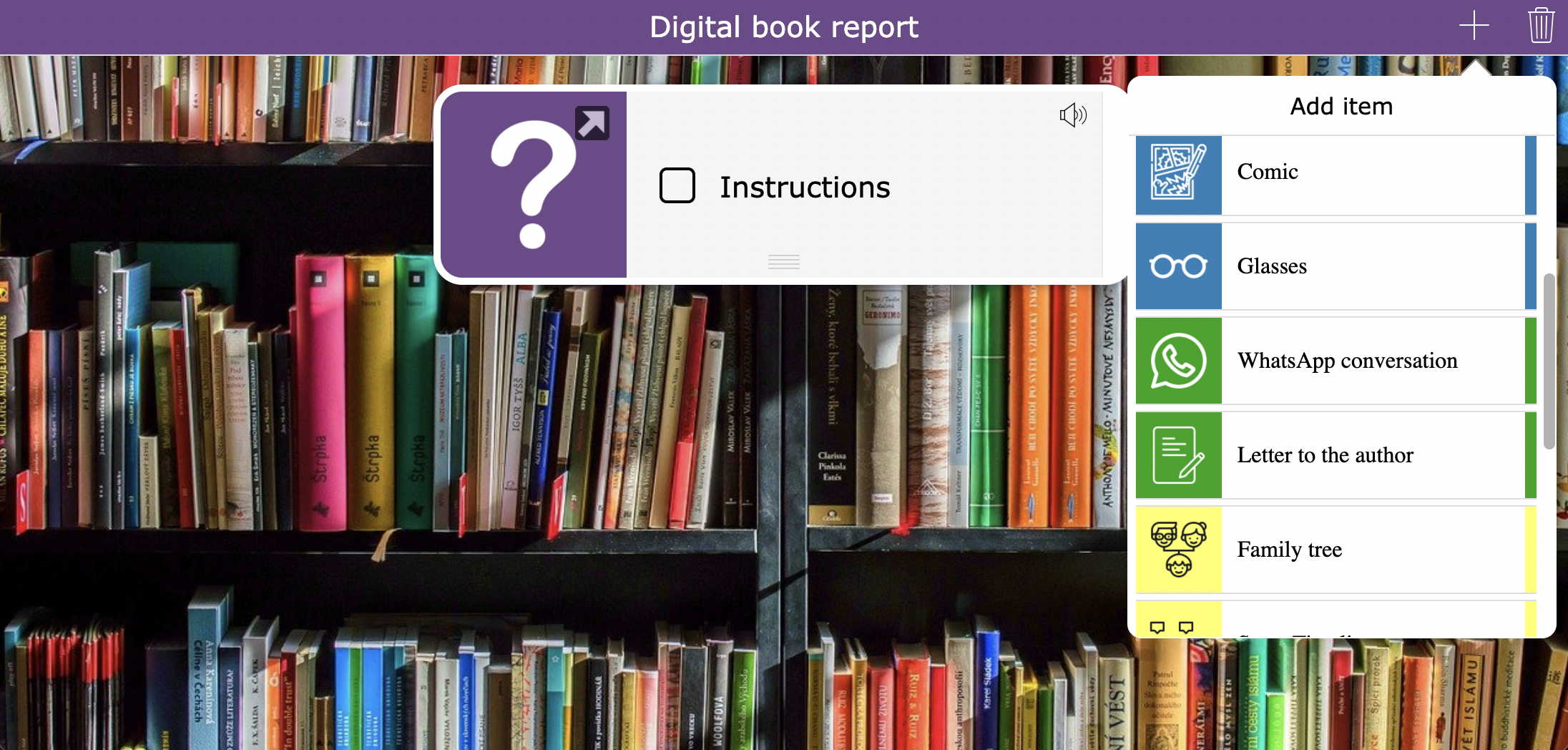
Above, you can find the 15 ready-to-use book report activities. You can use these lesson examples for free. Since they’re all made with BookWidgets, I’ve listed them in this BookWidgets group . Here’s what you need to do:
- Click on this link . It will immediately bring you to the group with all of the book report activities. If you don’t have a BookWidgets account yet, you’ll have to sign up first for free .
- Duplicate all the book report activities. Click on the settings wheel , select all widgets , click on the settings wheel again, choose duplicate selected widgets . Choose where you want to save the activities in your BookWidgets account.
- Go to your saved book report lessons. You can now click on the black dropdown arrow next to the ‘Show’ button of a particular exercise and select Edit . You can make some changes to this activity (if you want). If it’s perfect for you, click on Share in the upper right corner.
- Share this link with your students. When they click on it, they can fill it out. A lot of the book report examples above have been made with BookWidgets’ Whiteboard widget, in which students can use the tool menu at the bottom to switch tools (draw, type,…), and to switch colors. When done, they can submit the book reports to you by clicking on the envelope in the upper right corner.
- As a teacher, you go to “Grades & reporting” in BookWidgets to find your students’ answers.
Of course, now that you’ve got your own BookWidgets account, you can also create book report activities or other assignments yourself!
Attention! Once your free trial runs out, you’ll only be able to use the widgets you’ve already finished/shared with students. While your BookWidgets account will still work and you’ll still get your students’ results with the free BookWidgets version, you won’t be able to duplicate widgets nor create new widgets yourself anymore.
So that’s it! I hope these lesson ideas are useful for your classroom or at least give you lots of new ideas for your book report lessons! You can even create ones yourself!
Create your first digital book report with BookWidgets
Have fun, share this with fellow teachers and keep on rocking your classroom!
Join hundreds of thousands of subscribers, and get the best content on technology in education.
BookWidgets enables teachers to create fun and interactive lessons for tablets, smartphones, and computers.


How to Write a Book Report
Use the links below to jump directly to any section of this guide:
Book Report Fundamentals
Preparing to write, an overview of the book report format, how to write the main body of a book report, how to write a conclusion to a book report, reading comprehension and book reports, book report resources for teachers .
Book reports remain a key educational assessment tool from elementary school through college. Sitting down to close read and critique texts for their content and form is a lifelong skill, one that benefits all of us well beyond our school years. With the help of this guide, you’ll develop your reading comprehension and note-taking skills. You’ll also find resources to guide you through the process of writing a book report, step-by-step, from choosing a book and reading actively to revising your work. Resources for teachers are also included, from creative assignment ideas to sample rubrics.
Book reports follow general rules for composition, yet are distinct from other types of writing assignments. Central to book reports are plot summaries, analyses of characters and themes, and concluding opinions. This format differs from an argumentative essay or critical research paper, in which impartiality and objectivity is encouraged. Differences also exist between book reports and book reviews, who do not share the same intent and audience. Here, you’ll learn the basics of what a book report is and is not.
What Is a Book Report?
"Book Report" ( ThoughtCo )
This article, written by a professor emeritus of rhetoric and English, describes the defining characteristics of book reports and offers observations on how they are composed.
"Writing a Book Report" (Purdue OWL)
Purdue’s Online Writing Lab outlines the steps in writing a book report, from keeping track of major characters as you read to providing adequate summary material.
"How to Write a Book Report" ( Your Dictionary )
This article provides another helpful guide to writing a book report, offering suggestions on taking notes and writing an outline before drafting.
"How to Write a Successful Book Report" ( ThoughtCo )
Another post from ThoughtCo., this article highlights the ten steps for book report success. It was written by an academic advisor and college enrollment counselor.
What’s the Difference Between a Book Report and an Essay?
"Differences Between a Book Report & Essay Writing" ( Classroom)
In this article from the education resource Classroom, you'll learn the differences and similarities between book reports and essay writing.
"Differences Between a Book Report and Essay Writing" (SeattlePi.com)
In this post from a Seattle newspaper's website, memoirist Christopher Cascio highlights how book report and essay writing differ.
"The Difference Between Essays and Reports" (Solent Online Learning)
This PDF from Southampton Solent University includes a chart demonstrating the differences between essays and reports. Though it is geared toward university students, it will help students of all levels understand the differing purposes of reports and analytical essays.
What’s the Difference Between a Book Report and a Book Review?
"How to Write a Book Review and a Book Report" (Concordia Univ.)
The library at Concordia University offers this helpful guide to writing book report and book reviews. It defines differences between the two, then presents components that both forms share.
"Book Reviews" (Univ. of North Carolina)
The University of North Carolina at Chapel Hill’s writing guide shows the step-by-step process of writing book reviews, offering a contrast to the composition of book reports.
Active reading and thoughtful preparation before you begin your book report are necessary components of crafting a successful piece of writing. Here, you’ll find tips and resources to help you learn how to select the right book, decide which format is best for your report, and outline your main points.
Selecting and Finding a Book
"30 Best Books for Elementary Readers" (Education.com)
This article from Education.com lists 30 engaging books for students from kindergarten through fifth grade. It was written by Esme Raji Codell, a teacher, author, and children's literature specialist.
"How to Choose a Good Book for a Report (Middle School)" (WikiHow)
This WikiHow article offers suggestions for middle schoolers on how to choose the right book for a report, from getting started early on the search process to making sure you understand the assignment's requirements.
"Best Book-Report Books for Middle Schoolers" (Common Sense Media)
Common Sense Media has compiled this list of 25 of the best books for middle school book reports. For younger students, the article suggests you check out the site's "50 Books All Kids Should Read Before They're 12."
"50 Books to Read in High School" (Lexington Public Library)
The Lexington, Kentucky Public Library has prepared this list to inspire high school students to choose the right book. It includes both classics and more modern favorites.
The Online Computer Library Center's catalogue helps you locate books in libraries near you, having itemized the collections of 72,000 libraries in 170 countries.
Formats of Book Reports
"Format for Writing a Book Report" ( Your Dictionary )
Here, Your Dictionary supplies guidelines for the basic book report format. It describes what you'll want to include in the heading, and what information to include in the introductory paragraph. Be sure to check these guidelines against your teacher's requirements.
"The Good Old Book Report" (Scholastic)
Nancy Barile’s blog post for Scholastic lists the questions students from middle through high school should address in their book reports.
How to Write an Outline
"Writer’s Web: Creating Outlines" (Univ. of Richmond)
The University of Richmond’s Writing Center shows how you can make use of micro and macro outlines to organize your argument.
"Why and How to Create a Useful Outline" (Purdue OWL)
Purdue’s Online Writing Lab demonstrates how outlines can help you organize your report, then teaches you how to create outlines.
"Creating an Outline" (EasyBib)
EasyBib, a website that generates bibliographies, offers sample outlines and tips for creating your own. The article encourages you to think about transitions and grouping your notes.
"How to Write an Outline: 4 Ways to Organize Your Thoughts" (Grammarly)
This blog post from a professional writer explains the advantages of using an outline, and presents different ways to gather your thoughts before writing.
In this section, you’ll find resources that offer an overview of how to write a book report, including first steps in preparing the introduction. A good book report's introduction hooks the reader with strong opening sentences and provides a preview of where the report is going.
"Step-by-Step Outline for a Book Report" ( Classroom )
This article from Classroom furnishes students with a guide to the stages of writing a book report, from writing the rough draft to revising.
"Your Roadmap to a Better Book Report" ( Time4Writing )
Time4Writing offers tips for outlining your book report, and describes all of the information that the introduction, body, and conclusion should include.
"How to Start a Book Report" ( ThoughtCo)
This ThoughtCo. post, another by academic advisor and college enrollment counselor Grace Fleming, demonstrates how to write a pithy introduction to your book report.
"How to Write an Introduction for a Book Report" ( Classroom )
This brief but helpful post from Classroom details what makes a good book report introduction, down to the level of individual sentences.
The body paragraphs of your book report accomplish several goals: they describe the plot, delve more deeply into the characters and themes that make the book unique, and include quotations and examples from the book. Below are some resources to help you succeed in summarizing and analyzing your chosen text.
Plot Summary and Description
"How Do You Write a Plot Summary?" ( Reference )
This short article presents the goals of writing a plot summary, and suggests a word limit. It emphasizes that you should stick to the main points and avoid including too many specific details, such as what a particular character wears.
"How to Write a Plot for a Book Report" ( The Pen & The Pad )
In this article from a resource website for writers, Patricia Harrelson outlines what information to include in a plot summary for a book report.
"How to Write a Book Summary" (WikiHow)
Using Harry Potter and the Sorcerer’s Stone as an example, this WikiHow article demonstrates how to write a plot summary one step at a time.
Analyzing Characters and Themes
"How to Write a Character Analysis Book Report" ( The Pen & The Pad )
Kristine Tucker shows how to write a book report focusing on character. You can take her suggestions as they are, or consider incorporating them into the more traditional book report format.
"How to Write a Character Analysis" (YouTube)
The SixMinuteScholar Channel utilizes analysis of the film Finding Nemo to show you how to delve deeply into character, prioritizing inference over judgment.
"How to Define Theme" ( The Editor's Blog )
Fiction editor Beth Hill contributes an extended definition of theme. She also provides examples of common themes, such as "life is fragile."
"How to Find the Theme of a Book or Short Story" ( ThoughtCo )
This blog post from ThoughtCo. clarifies the definition of theme in relation to symbolism, plot, and moral. It also offers examples of themes in literature, such as love, death, and good vs. evil.
Selecting and Integrating Quotations
"How to Choose and Use Quotations" (Santa Barbara City College)
This guide from a college writing center will help you choose which quotations to use in your book report, and how to blend quotations with your own words.
"Guidelines for Incorporating Quotes" (Ashford Univ.)
This PDF from Ashford University's Writing Center introduces the ICE method for incorporating quotations: introduce, cite, explain.
"Quote Integration" (YouTube)
This video from The Write Way YouTube channel illustrates how to integrate quotations into writing, and also explains how to cite those quotations.
"Using Literary Quotations" (Univ. of Wisconsin-Madison)
This guide from the University of Wisconsin-Madison’s Writing Center helps you emphasize your analysis of a quotation, and explains how to incorporate quotations into your text.
Conclusions to any type of paper are notoriously tricky to write. Here, you’ll learn some creative ways to tie up loose ends in your report and express your own opinion of the book you read. This open space for sharing opinions that are not grounded in critical research is an element that often distinguishes book reports from other types of writing.
"How to Write a Conclusion for a Book Report" ( Classroom )
This brief article from the education resource Classroom illustrates the essential points you should make in a book report conclusion.
"Conclusions" (Univ. of North Carolina)
The University of North Carolina at Chapel Hill’s Writing Center lays out strategies for writing effective conclusions. Though the article is geared toward analytical essay conclusions, the tips offered here will also help you write a strong book report.
"Ending the Essay: Conclusions" (Harvard College Writing Center)
Pat Bellanca’s article for Harvard University’s Writing Center presents ways to conclude essays, along with tips. Again, these are suggestions for concluding analytical essays that can also be used to tie up a book report's loose ends.
Reading closely and in an engaged manner is the strong foundation upon which all good book reports are built. The resources below will give you a picture of what active reading looks like, and offer strategies to assess and improve your reading comprehension. Further, you’ll learn how to take notes—or “annotate” your text—making it easier to find important information as you write.
How to Be an Active Reader
"Active Reading Strategies: Remember and Analyze What You Read" (Princeton Univ.)
Princeton University’s McGraw Center for Teaching and Learning recommends ten strategies for active reading, and includes sample diagrams.
"Active Reading" (Open Univ.)
The Open University offers these techniques for reading actively alongside video examples. The author emphasizes that you should read for comprehension—not simply to finish the book as quickly as possible.
"7 Active Reading Strategies for Students" ( ThoughtCo )
In this post, Grace Fleming outlines seven methods for active reading. Her suggestions include identifying unfamiliar words and finding the main idea.
"5 Active Reading Strategies for Textbook Assignments" (YouTube)
Thomas Frank’s seven-minute video demonstrates how you can retain the most important information from long and dense reading material.
Assessing Your Reading Comprehension
"Macmillan Readers Level Test" (MacMillan)
Take this online, interactive test from a publishing company to find out your reading level. You'll be asked a number of questions related to grammar and vocabulary.
"Reading Comprehension Practice Test" (ACCUPLACER)
ACCUPLACER is a placement test from The College Board. This 20-question practice test will help you see what information you retain after reading short passages.
"Reading Comprehension" ( English Maven )
The English Maven site has aggregated exercises and tests at various reading levels so you can quiz your reading comprehension skills.

How to Improve Your Reading Comprehension
"5 Tips for Improving Reading Comprehension" ( ThoughtCo )
ThoughtCo. recommends five tips to increase your reading comprehension ability, including reading with tools such as highlighters, and developing new vocabulary.
"How to Improve Reading Comprehension: 8 Expert Tips" (PrepScholar)
This blog post from PrepScholar provides ideas for improving your reading comprehension, from expanding your vocabulary to discussing texts with friends.
CrashCourse video: "Reading Assignments" (YouTube)
This CrashCourse video equips you with tools to read more effectively. It will help you determine how much material you need to read, and what strategies you can use to absorb what you read.
"Improving Reading Comprehension" ( Education Corner )
From a pre-reading survey through post-reading review, Education Corner walks you through steps to improve reading comprehension.
Methods of In-text Annotation
"The Writing Process: Annotating a Text" (Hunter College)
This article from Hunter College’s Rockowitz Writing Center outlines how to take notes on a text and provides samples of annotation.
"How To Annotate Text While Reading" (YouTube)
This video from the SchoolHabits YouTube channel presents eleven annotation techniques you can use for better reading comprehension.
"5 Ways To Annotate Your Books" ( Book Riot )
This article from the Book Riot blog highlights five efficient annotation methods that will save you time and protect your books from becoming cluttered with unnecessary markings.
"How Do You Annotate Your Books?" ( Epic Reads )
This post from Epic Reads highlights how different annotation methods work for different people, and showcases classic methods from sticky notes to keeping a reading notebook.
Students at every grade level can benefit from writing book reports, which sharpen critical reading skills. Here, we've aggregated sources to help you plan book report assignments and develop rubrics for written and oral book reports. You’ll also find alternative book report assessment ideas that move beyond the traditional formats.
Teaching Elementary School Students How to Write Book Reports
"Book Reports" ( Unique Teaching Resources )
These reading templates courtesy of Unique Teaching Resources make great visual aids for elementary school students writing their first book reports.
"Elementary Level Book Report Template" ( Teach Beside Me )
This printable book report template from a teacher-turned-homeschooler is simple, classic, and effective. It asks basic questions, such as "who are the main characters?" and "how did you feel about the main characters?"
"Book Reports" ( ABC Teach )
ABC Teach ’s resource directory includes printables for book reports on various subjects at different grade levels, such as a middle school biography book report form and a "retelling a story" elementary book report template.
"Reading Worksheets" ( Busy Teacher's Cafe )
This page from Busy Teachers’ Cafe contains book report templates alongside reading comprehension and other language arts worksheets.
Teaching Middle School and High School Students How to Write Book Reports
"How to Write a Book Report: Middle and High School Level" ( Fact Monster)
Fact Monster ’s Homework Center discusses each section of a book report, and explains how to evaluate and analyze books based on genre for students in middle and high school.
"Middle School Outline Template for Book Report" (Trinity Catholic School)
This PDF outline template breaks the book report down into manageable sections for seventh and eighth graders by asking for specific information in each paragraph.
"Forms for Writing a Book Report for High School" ( Classroom )
In this article for Classroom, Elizabeth Thomas describes what content high schoolers should focus on when writing their book reports.
"Forms for Writing a Book Report for High School" ( The Pen & The Pad )
Kori Morgan outlines techniques for adapting the book report assignment to the high school level in this post for The Pen & The Pad .
"High School Book Lists and Report Guidelines" (Highland Hall Waldorf School)
These sample report formats, grading paradigms, and tips are collected by Highland Hall Waldorf School. Attached are book lists by high school grade level.
Sample Rubrics
"Book Review Rubric Editable" (Teachers Pay Teachers)
This free resource from Teachers Pay Teachers allows you to edit your book report rubric to the specifications of your assignment and the grade level you teach.
"Book Review Rubric" (Winton Woods)
This PDF rubric from a city school district includes directions to take the assignment long-term, with follow-up exercises through school quarters.
"Multimedia Book Report Rubric" ( Midlink Magazine )
Perfect for oral book reports, this PDF rubric from North Carolina State University's Midlink Magazine will help you evaluate your students’ spoken presentations.
Creative Book Report Assignments
"25 Book Report Alternatives" (Scholastic)
This article from the Scholastic website lists creative alternatives to the standard book report for pre-kindergarteners through high schoolers.
"Fresh Ideas for Creative Book Reports" ( Education World )
Education World offers nearly 50 alternative book report ideas in this article, from a book report sandwich to a character trait diagram.
"A Dozen Ways to Make Amazingly Creative Book Reports" ( We Are Teachers )
This post from We Are Teachers puts the spotlight on integrating visual arts into literary study through multimedia book report ideas.
"More Ideas Than You’ll Ever Use for Book Reports" (Teachnet.com)
This list from Teachnet.com includes over 300 ideas for book report assignments, from "interviewing" a character to preparing a travel brochure to the location in which the book is set.
"Fifty Alternatives to the Book Report" (National Council of Teachers of English)
In this PDF resource from the NCTE's English Journal, Diana Mitchell offers assignment ideas ranging from character astrology signs to a character alphabet.
- PDFs for all 136 Lit Terms we cover
- Downloads of 1916 LitCharts Lit Guides
- Teacher Editions for every Lit Guide
- Explanations and citation info for 40,380 quotes across 1916 books
- Downloadable (PDF) line-by-line translations of every Shakespeare play
Need something? Request a new guide .
How can we improve? Share feedback .
LitCharts is hiring!

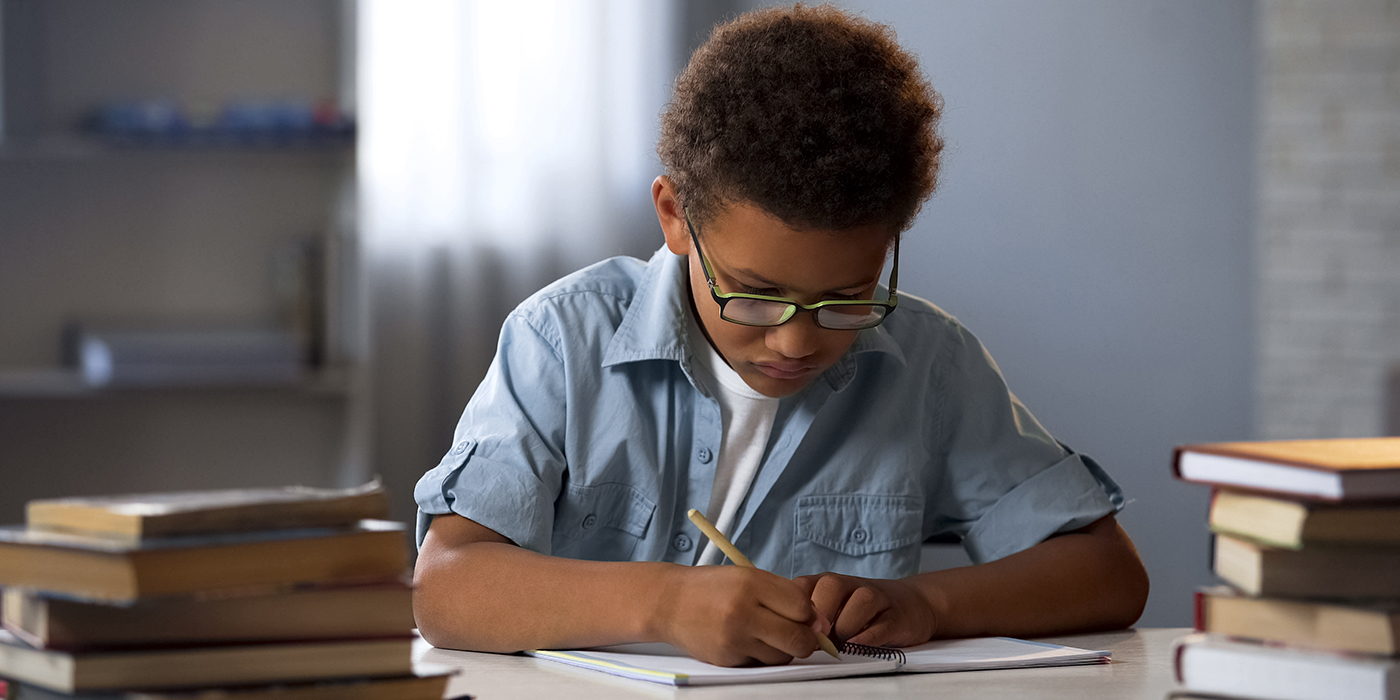
Book reports may be a staple of elementary and middle school education, but they are far less frequently assigned in the higher grades. High school ELA teacher Nancy Barile thinks that should change. Students in 6th grade and above can learn a lot when they are challenged to use higher order thinking skills to understand and interpret the literature they read via a good old-fashioned high school book report template.
To start, Barile recommends that students choose the books they want to write about themselves—with teacher approval, of course. See the book list at the end of this article for engaging young adult titles and book report ideas, including books with thematic elements that are particularly appealing to older readers.
Writing the Report
To structure the book reports, Barile recommends eight sections of analysis that will “require students to provide evidence of their choices and reasoning, which helps them think more deeply about what they have read.” For each section, students should give examples from the book to back up their analysis. The below book report template can help.
If your students need to review the elements of fiction before beginning this assignment, Teaching Powerful Writing is a great resource. This collection of personal narratives and writing activities highlights different writing techniques and covers literary elements such as voice, using flashback, and point of view.
Book Report Breakdown
Students should identify the setting of the novel and explain why the setting is important.
- How are the time and place significant to the events of the story?
- How does the setting contribute to the overall meaning of the novel?
2. CHARACTERIZATION
Beginning with the protagonist and then moving on to the supporting characters, students should discuss the characterizations in their novel.
- Is the character well-developed, or are they a stock or stereotypical character?
- Is the character static (unchanging throughout the story) or dynamic (changes by the end of the novel)?
- What personality traits does the character possess, and how does this affect the outcome of the novel?
- Do the character's inner thoughts and feelings reflect their outward actions? Explain.
3. POINT OF VIEW
Students should identify the novel’s point of view and why it is significant.
- What advantages does telling the story in (first person/second person/third person) have? Why?
- Why do you think the author chose this point of view?
4. CONFLICT
What is the primary conflict in the novel? Is it human vs. human, human vs. nature, human vs. society, or human vs. themselves? Your students should delve into conflict much more deeply than they may have in the past. If their story has more than one major conflict, they should detail the additional conflicts as well.
- Explain the conflict and how the protagonist deals with it.
- Does the protagonist overcome the conflict? Or do they succumb to it?
Students should identify the theme of the novel and the specific meaning of the book they chose. They should avoid stock themes such as “Don’t judge a book by its cover” and think more critically on their author’s message.
- What was the author’s purpose in writing the book?
What are the symbols in the novel and how are they significant?
- How do the symbols help develop the story and contribute to the overall meaning of the book?
7. FORESHADOWING
Students should identify the foreshadowing in their novel and give examples from the text.
- Did you know what was going to come? Why?
- Were there any hints as to what might occur?
- Why do you think the author chose to use or not use foreshadowing?
Finally, students should evaluate the ending of the book.
- Was the ending justified? (Was the ending viable and believable?)
- Was it a satisfactory ending that fit the rest of the novel?
- Was there a catharsis of some kind? Explain.
If your students follow this structure in their book report, it will help them explore each of the elements of fiction in a very specific way. As Barile discovered in her decades of teaching: “Students who explain, interpret, and synthesize what they have read gain a deeper understanding and appreciation of literature.”
Shop great classroom titles for book reports below! You can find all books and activities at The Teacher Store .
- Try for free
How to Write a Book Report (+ Book Report Example)
Download for free, specific tips for writing effective book reports..
Write better book reports using the tips, examples, and outlines presented here. This resource covers three types of effective book reports: plot summaries, character analyses, and theme analyses. It also features a specific book report example for students.
How to write a book report (+ book report example)
Whether you're a student looking to show your comprehension of a novel, or simply a book lover wanting to share your thoughts, writing a book report can be a rewarding experience. This guide, filled with tips, tricks, and a book report example, will help you craft a report that effectively communicates your understanding and analysis of your chosen book.
Looking for a printable resource on book reports? See our Printable Book Report Outlines and Examples
What is a book report?
Book reports can take on many different forms. Writing a book review helps you practice giving your opinion about different aspects of a book, such as an author's use of description or dialogue.
You can write book reports of any type, from fiction to non-fiction research papers, or essay writing; however, there are a few basic elements you need to include to convey why the book you read was interesting when writing a good book report.

Types of book reports
Three types of effective book reports are plot summaries, character analyses, and theme analyses. Each type focuses on different aspects of the book and requires a unique approach. These three types of book reports will help you demonstrate your understanding of the book in different ways.
Plot summary
When you are writing a plot summary for your book report you don't want to simply summarize the story. You need to explain what your opinion is of the story and why you feel the plot is so compelling, unrealistic, or sappy. It is the way you analyze the plot that will make this a good report. Make sure that you use plenty of examples from the book to support your opinions.
Try starting the report with a sentence similar to the following:
The plot of I Married a Sea Captain , by Monica Hubbard, is interesting because it gives the reader a realistic sense of what it was like to be the wife of a whaling captain and live on Nantucket during the 19th century.
Character analysis
If you choose to write a character analysis, you can explore the physical and personality traits of different characters and the way their actions affect the plot of the book.
- Explore the way a character dresses and what impression that leaves with the reader.
- What positive characteristics does the character possess?
- Does the character have a "fatal flaw" that gets him/her into trouble frequently?
- Try taking examples of dialogue and analyzing the way a character speaks. Discuss the words he/she chooses and the way his/her words affect other characters.
- Finally, tie all of your observations together by explaining the way the characters make the plot move forward.
In the novel Charlotte's Web , by E. B. White, Templeton the rat may seem like an unnecessary character but his constant quest for food moves the plot forward in many ways.
Theme analyses
Exploring the themes (or big ideas that run throughout the story) in a book can be a great way to write a book report because picking a theme that you care about can make the report easier to write. Try bringing some of your thoughts and feelings as a reader into the report as a way to show the power of a theme. Before you discuss your own thoughts, however, be sure to establish what the theme is and how it appears in the story.
- Explain exactly what theme you will be exploring in your book report.
- Use as many examples and quotations from the book as possible to prove that the theme is important to the story.
- Make sure that you talk about each example or quotation you've included. Make a direct connection between the theme and the example from the book.
- After you have established the theme and thoroughly examined the way it affects the book, include a few sentences about the impact the theme had upon you and why it made the book more or less enjoyable to read.
In the novel Roll of Thunder Hear My Cry , by Mildred Taylor, the theme of racial prejudice is a major catalyst in the story.
How to write a book report

1. Thoroughly read the book
Immerse yourself in the book, taking the time to read it in its entirety. As you read, jot down notes on important aspects such as key points, themes, and character developments.
2. Identify the main elements of the book
Scrutinize the book's primary components, including its main themes, characters, setting, and plot. These elements will form the basis of your report.
3. Formulate a thesis statement
Compose a thesis statement that encapsulates your personal perspective about the book. This should be a concise statement that will guide your analysis and give your report a clear focus.
4. Create a detailed outline
Plan the structure of your book report. This outline should include an introduction, body paragraphs each focusing on a different aspect of the book, and a conclusion.
5. Craft the introduction
The introduction should provide basic information such as the book's title and author, and present your thesis statement. It should engage the reader and make them interested in your analysis.
6. Write the body of the report
In the body of your report, discuss in detail the book's main elements that you identified in step 3. Use specific examples from the text to support your analysis and to prove your thesis statement.
7. Write a strong conclusion
Your conclusion should summarize your analysis, reaffirm your thesis, and provide a closing thought or reflection on the overall book.
8. Review and edit your report
After writing, take the time to revise your report for clarity and coherence. Check for and correct any grammar or spelling errors. Ensure that your report clearly communicates your understanding and analysis of the book.
9. Include citations
If you have used direct quotes or specific ideas from the book, make sure to include proper citations . This is crucial in academic writing and helps avoid plagiarism.
10. Proofread
Finally, proofread your work. Look for any missed errors and make sure that the report is the best it can be before submitting it.

Book report example
Below is a book report example on the novel To Kill a Mockingbird by Harper Lee.
In To Kill a Mockingbird , Harper Lee presents a thoughtful exploration of racial prejudice, morality, and the loss of innocence. Set in the small, fictional town of Maycomb, Alabama, during the Great Depression, the book centers around the Finch family - young Scout, her older brother Jem, and their widowed father, Atticus. Scout's character provides a fresh perspective as she narrates her experiences and observations of the unjust racial prejudice in her town. Her honesty and curiosity, coupled with her father's teachings, allow her to grow from innocence to a more profound understanding of her society's inequalities. The plot revolves around Atticus Finch, a respected lawyer, defending a black man, Tom Robinson, unjustly accused of raping a white woman. As the trial progresses, it becomes clear that Robinson is innocent, and the accusation was a product of racial prejudice. Despite compelling evidence in Robinson's favor, he is convicted, symbolizing the power of bias over truth. The theme of racial prejudice is a significant part of the book. Lee uses the trial and its unjust outcome to critique the racial prejudice prevalent in society. For example, despite Atticus's solid defense, the jury's racial bias leads them to find Robinson guilty. This instance highlights how deeply ingrained prejudice can subvert justice. The book also explores the theme of the loss of innocence. Scout and Jem's experiences with prejudice and injustice lead to their loss of innocence and a better understanding of the world's complexities. For example, Scout's realization of her town's unfair treatment of Robinson demonstrates her loss of innocence and her understanding of societal biases. Overall, To Kill a Mockingbird is a compelling exploration of the harsh realities of prejudice and the loss of innocence. Harper Lee's intricate characters and vivid storytelling have made this book a classic.
The above is an excellent book report example for several reasons. First, it provides a clear, concise summary of the plot without giving away the entire story. Second, it analyzes the main characters, their roles, and their impacts on the story. Third, it discusses the major themes of the book - racial prejudice and loss of innocence - and supports these themes with evidence from the text. Finally, it presents a personal perspective on the book's impact and overall message, demonstrating a deep understanding of the book's significance.
Book report checklist
Always include the following elements in any book report:
- The type of book report you are writing
- The book's title
- The author of the book
- The time when the story takes place
- The location where the story takes place
- The names and a brief description of each of the characters you will be discussing
- Many quotations and examples from the book to support your opinions
- A thesis statement
- The point of view of the narrator
- Summary of the book
- The main points or themes discussed in the work of fiction or non-fiction
- The first paragraph (introductory paragraph), body paragraphs, and final paragraph
- The writing styles of the author
- A critical analysis of the fiction or non-fiction book
Don't forget!
No matter what type of book report you decide to write, ensure it includes basic information about the main characters, and make sure that your writing is clear and expressive so that it’s easy for audiences in middle school, high school, college-level, or any grade level to understand. Also, include examples from the book to support your opinions. Afterward, conduct thorough proofreading to complete the writing process. Book reports may seem disconnected from your other schoolwork, but they help you learn to summarize, compare and contrast, make predictions and connections, and consider different perspectives & skills you'll need throughout your life.
Looking for more writing resources? You can find them in our creative writing center .
Featured Middle School Resources
Related Resources

- Grades 6-12
- School Leaders
Learn How to Support Stressed and Anxious Students.
Free Book Report Templates: Printables for Grades 3-5 for Fiction or Nonfiction Books
Take a new spin on your book report assignment. 📚😍
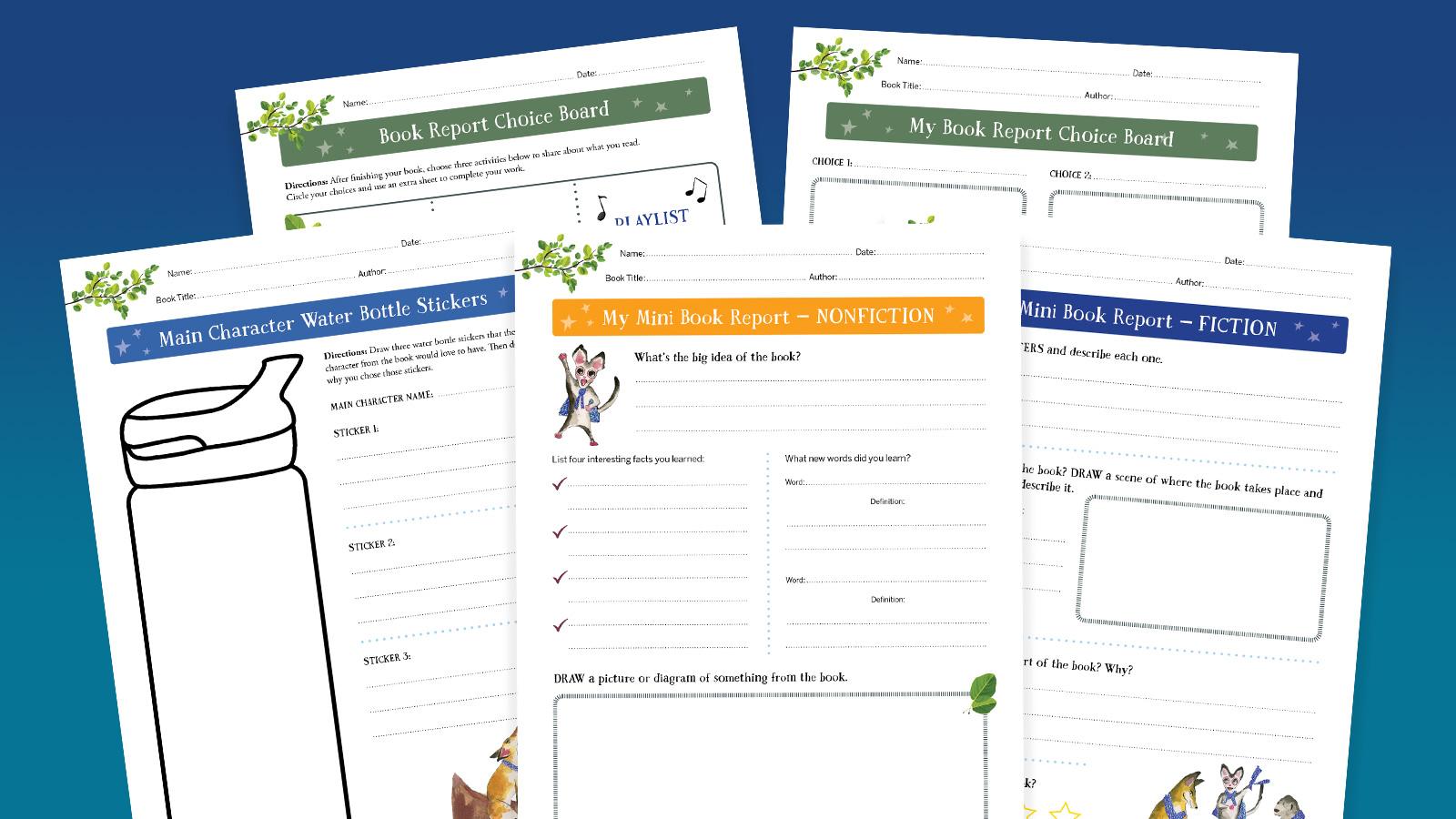
The Nocturnals are fun-filled animal adventure books with companion nonfiction for elementary school classrooms. Check out The Nocturnals World , a resource hub with free turnkey printable activities and educator guides, and browse The Nocturnals bookstore!
Building lifelong readers is one of the most important things we can do in our classrooms. The benefits of reading are wide-ranging, from improving vocabulary skills to boosting cognitive development, concentration skills, and curiosity for learning. So, how do we get young learners excited about reading and sharing what they’ve learned? Check out our free book report template printables .
Four different activities are ready to print to help you take a new spin on your next book report assignment for fiction or nonfiction books. Students will love filling in their mini book report one-pagers or making their selections from the choice board to share details about what they read.
Worksheets Included:
My mini book report—fiction and nonfiction.
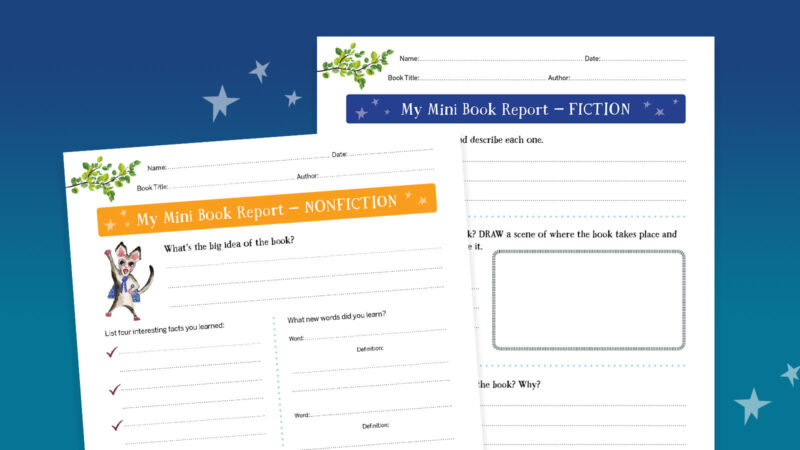
These book report one-pagers are a great way for students to reflect on their readings as they complete different sections of the worksheet. There’s a version for both fiction and nonfiction.
Book Report Choice Board
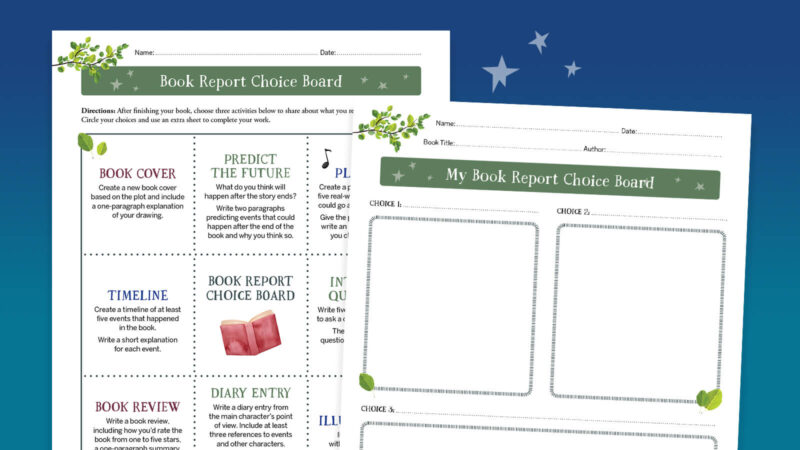
Give students choices on how they want to complete their book report assignment. This choice board offers eight fun options, from designing a comic to creating a playlist or writing interview questions, so students can let their creativity guide them.
Designing Water Bottle Stickers
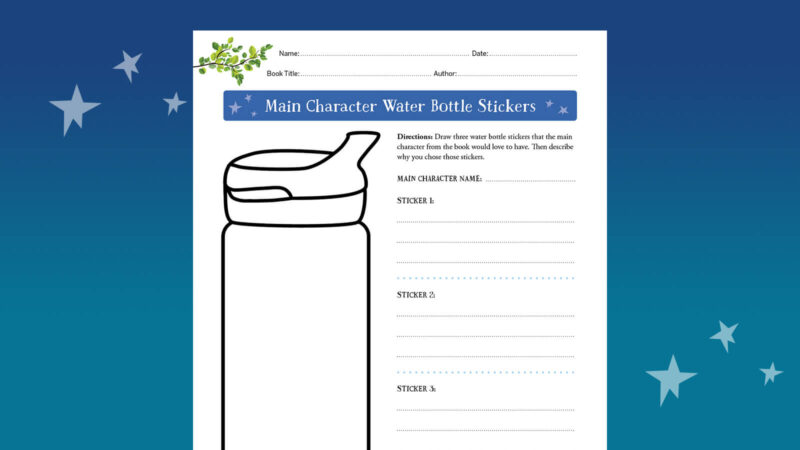
Students are obsessed with stickers. In this unique activity, students will design water bottle stickers that the main character of the book would love to have, along with a short description of their choices.
Give students fun-filled books to choose from
Animal adventure books from The Nocturnals are the perfect way to get your upper elementary students excited about reading. Paired with nonfiction companion texts that explore nocturnal animal facts, this series is great for hi-lo readers. Visit The Nocturnals World for more free printable activities and educator guides.
You Might Also Like
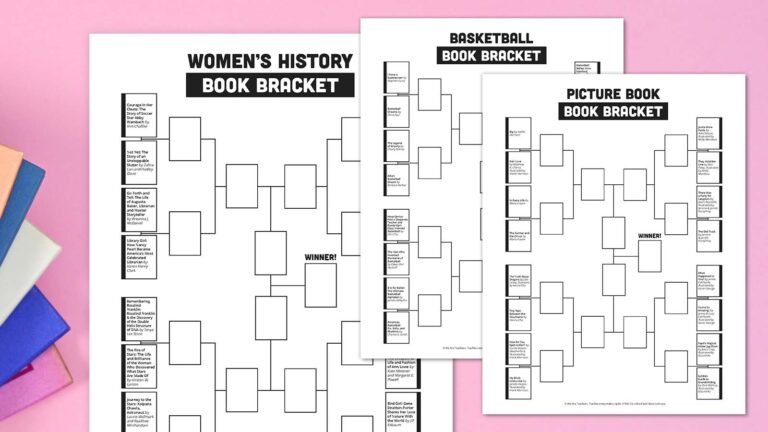
Book Bracket Template: Free Download for March Madness and Beyond
It's a battle of the books! Continue Reading
Copyright © 2024. All rights reserved. 5335 Gate Parkway, Jacksonville, FL 32256

Project-Based Learning
- Classroom Decor
Seasonal and Holiday
- Social Studies
Teacher Tips
- Blog , Reading , Social Studies , Teaching tips
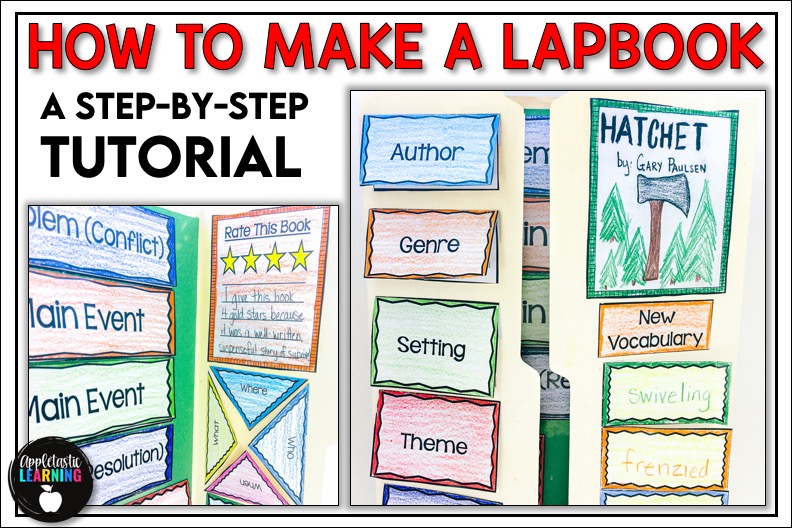
Share this Post
How to make a lap book - a free lapbook template.
Lap Books are everywhere! If you like hands-on projects, interactive notebooks, or creative ways to engage your students in learning, then you may want to give lapbooks a try. Today’s post is on how to make a lap book with just a few simple items! Plus, download a FREE Book Report Lapbook Template for teachers and homeschooling families for use with your students!
When I first heard of lapbooks and saw some samples that other teachers had made, I was afraid it would be too time-consuming and project-heavy without a focus on real learning. I was wrong . (Don’t tell my husband I said that…he may write it down for future reference!) 😉
Lap books do not have to be huge, multi-paged contraptions. They are actually quite simple to make. Here is how to create a basic lap book, using ONE file folder . 😀 I’m a simple gal at heart!
Materials needed:
- 1 file folder
- 1 sheet colored construction paper (or cardstock)
- colored pencils, crayons, extra paper
Place the file folder open flat on the table.
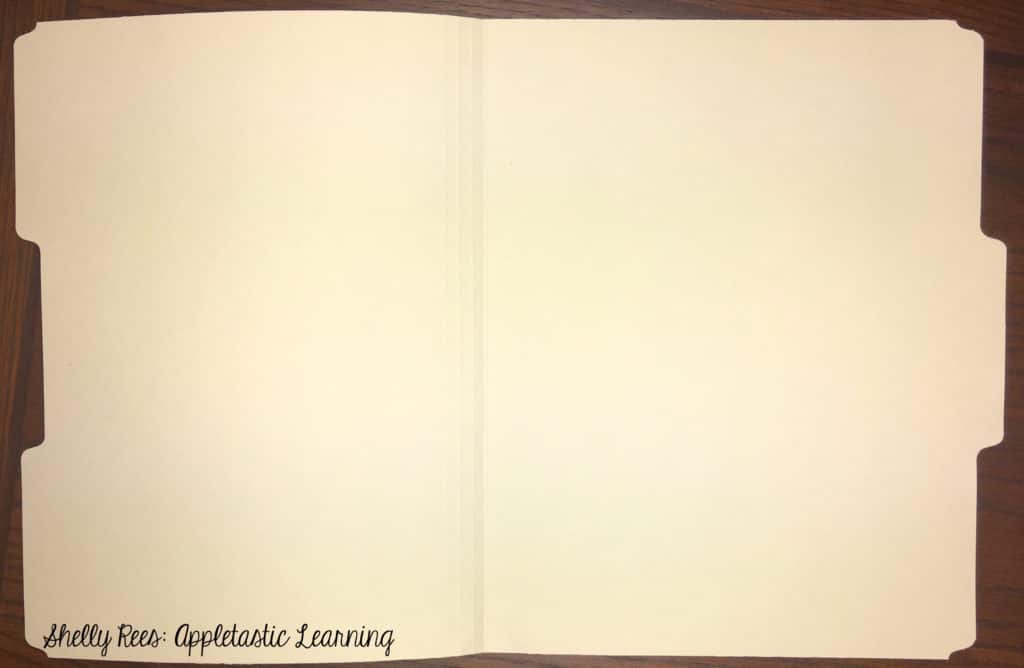
STEP 2:
Fold each side of the folder inward toward the center fold. Crease strongly on the 2 new folds. (It should look like a French Door.)

Cut a piece of heavy construction paper or card stock and glue it to the inside back wall of the lap book. This not only reinforces and strengthens the back wall, but it also adds some color to the project.

Add interactive notes, titles, research, and any desired features to your lap book.
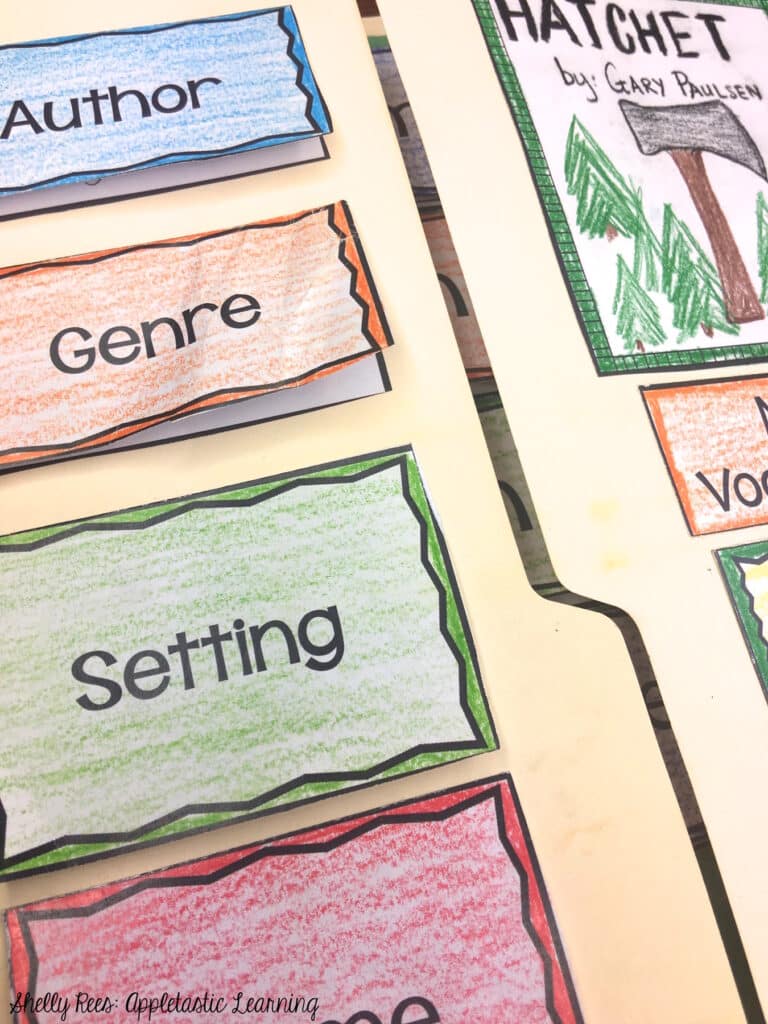
That’s all there is to it! Simple, easy, and fun. There are so many different projects for which you can use lapbooks – book reports, famous person project, history report, all about me, math display, creative writing project, and so much more!
Interested in trying a lapbook with a FREE printable template? Click HERE to download the FREE Book Report Lapbook ! It includes photo examples, easy-to-follow directions, and ALL the printable templates you need to complete the project with your kiddos. Here are some photos of the completed project:
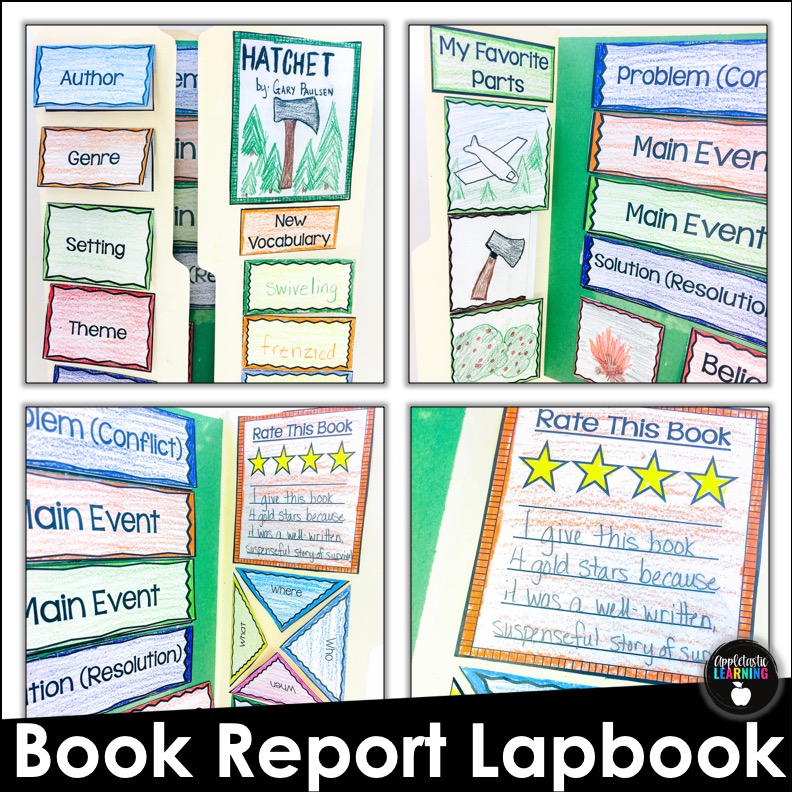
Looking for other book report ideas? Check out this blog post on Cereal Box Book Reports . They are a hit with students and a nice change of pace from the traditional book report. Also take a look at 10 Book Report Ideas that Kids will Love . I think you’ll like it!
OTHER LAP BOOK PROJECTS TO TRY:

Save This Lapbook Tutorial for Later
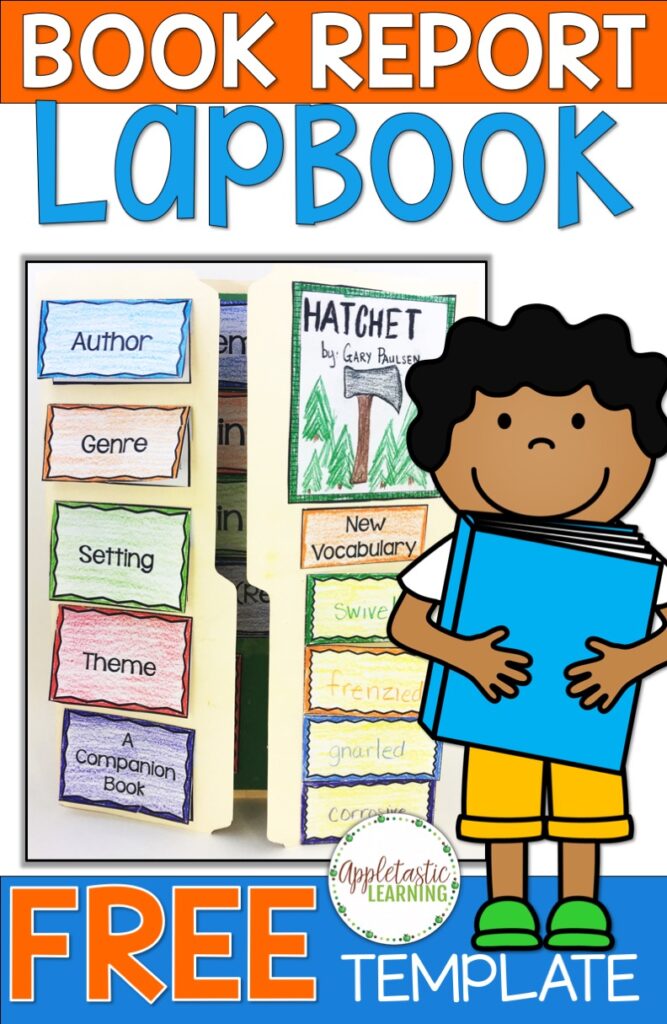
Pin this to your favorite classroom Pinterest board so you can come back for this tutorial on how to make a lapbook!

Shelly Rees
Hi, I’m Shelly! Thank you for being here. I love helping third, fourth, and fifth grade teachers with fun and engaging activities that require no to little prep! Let me help you by taking some of the stress and work off your plate.
Hi, I'm Shelly
- Seasonal & Holiday
- Teaching Ideas
New Products
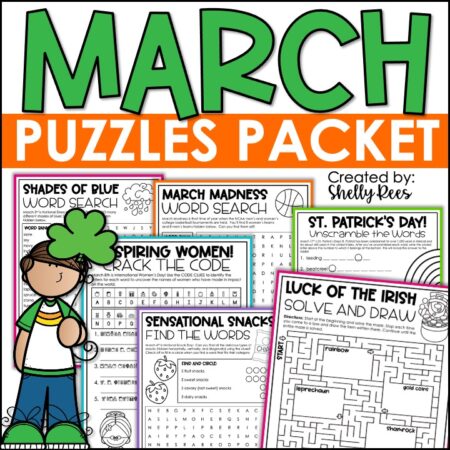
March Word Searches and Puzzles
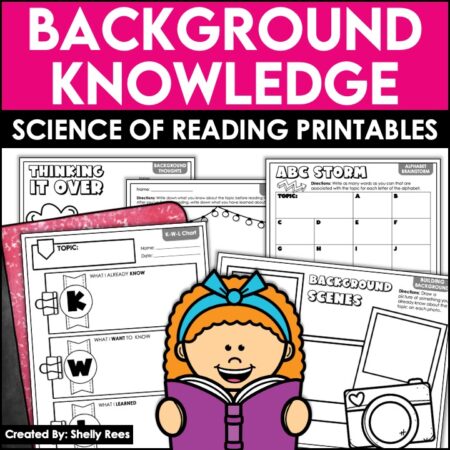
Science of Reading Background Knowledge Organizers
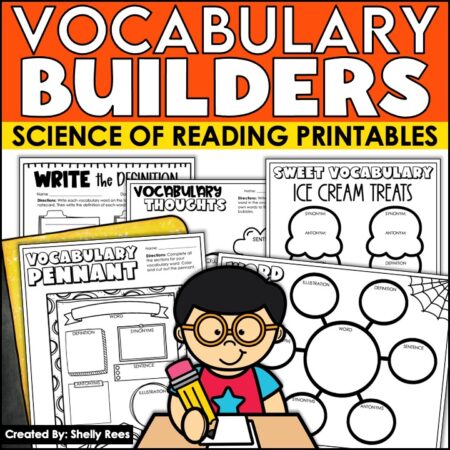
Science of Reading Vocabulary Activities and Graphic Organizers
You might also like.

Making a Valley Forge Mini-Booklet

What are Interactive Notebooks?
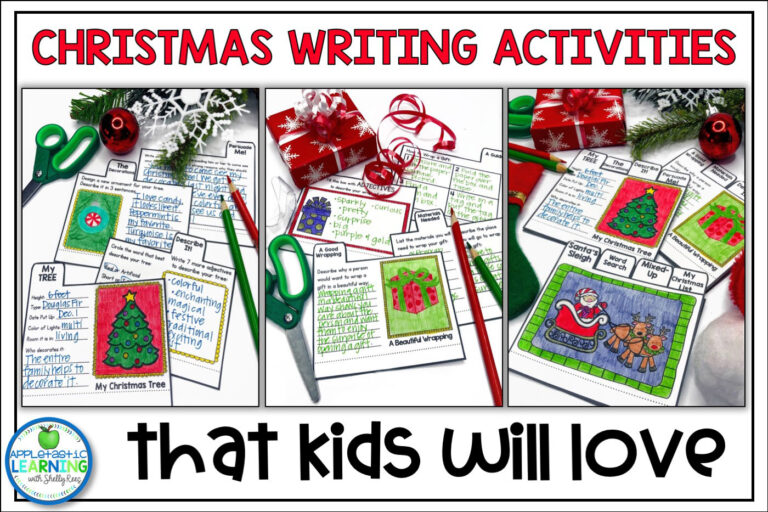
Christmas Writing Activities That Kids Will Love
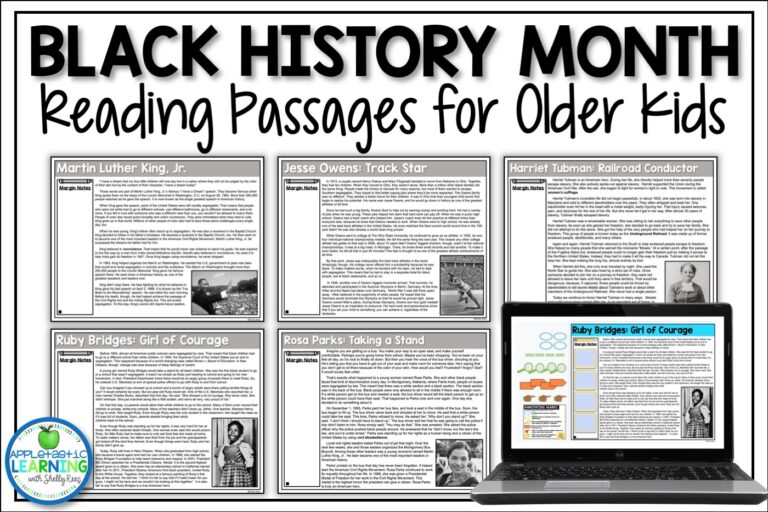
Black History Reading Passages
©2022 Shelly Rees. All Rights Reserved.
Designed by Ashley Hughes.
404 Not found

COMMENTS
15. Watercolor Rainbow Book Report. This is great for biography research projects. Students cut out a photocopied image of their subject and glue it in the middle. Then, they draw lines from the image to the edges of the paper, like rays of sunshine, and fill in each section with information about the person.
12 Creative Book Report Projects Your Students Will Love. April 20, 2022 admin. Whether you're teaching a whole-class novel, or finishing a round of independent reading or literature circles, post-reading assessments are always more engaging when they're more than just a test or essay. Below, you'll discover a dozen fun book report ideas ...
Book project ideas. From dioramas to book jacket designs, book report t shirts to cereal box presentations, and posters to letters to authors - we have so many book report ideas for 3rd grade!These ideas are great for book report ideas for 5th grade and elementary age students. Make a diorama - these still my children's favorite; Create a book jacket - different than the original
Here are 10 book report ideas that kids will love: 1. Cereal Box Book Report. These oh-so-cool reports were always the top-ranked project by my fifth graders. Students loved creating an original book report display using a covered cereal box and ready-made templates.
Click to open. 7. Book cover. Here, students get to be creative and invent their own book cover (front and back) of the book they just read. Or maybe just a cover for of a piece of text you've read out loud. They can use the whiteboard tools: pencil, type tool, switch colors, add images, etc. Click to open. 8.
Ten Great Creative Book Report Ideas. There are many, many great ways for students to respond to literature. Students especially enjoy creative book reports. These will work for almost any book and are especially good when students are reading independent book selections. A quick web search will reveal that there are many ideas out there for ...
4. Make a new book jacket for the book. Front cover: Draw and color an illustration for the book. Inside front flap: Write descriptions of the main characters. Inside back flap: Write a description of the setting and a short summary of the book. Back cover: Write 5-10 quotes from the book that are important to understanding the story. All genres.
Develop the body: You can follow your outline or a book report template to write the body of your report. Discuss each element (plot, characters, themes, etc.) in separate paragraphs or sections. Conclude your report: Summarize your main points and offer your final thoughts and evaluation of the book. Review and revise: Finally, review and ...
3. Organize your notes and create an outline. Gather your notes and arrange them into categories. Once you've completed this, write an outline and organize the categories to become the paragraphs of your book report. Jot down bullet points on what each paragraph will include and what part of the book can support it.
Preparing to Write. Active reading and thoughtful preparation before you begin your book report are necessary components of crafting a successful piece of writing. Here, you'll find tips and resources to help you learn how to select the right book, decide which format is best for your report, and outline your main points.
The below book report template can help. If your students need to review the elements of fiction before beginning this assignment, Teaching Powerful Writing is a great resource. This collection of personal narratives and writing activities highlights different writing techniques and covers literary elements such as voice, using flashback, and ...
2. Identify the main elements of the book. Scrutinize the book's primary components, including its main themes, characters, setting, and plot. These elements will form the basis of your report. 3. Formulate a thesis statement. Compose a thesis statement that encapsulates your personal perspective about the book.
Four different activities are ready to print to help you take a new spin on your next book report assignment for fiction or nonfiction books. Students will love filling in their mini book report one-pagers or making their selections from the choice board to share details about what they read. Get My Book Report Template Printables.
colored pencils, crayons, extra paper. STEP 1: Place the file folder open flat on the table. STEP 2: Fold each side of the folder inward toward the center fold. Crease strongly on the 2 new folds. (It should look like a French Door.) STEP 3: Cut a piece of heavy construction paper or card stock and glue it to the inside back wall of the lap book.
What is a book report? A book report is a written summary of a book's content and your analysis of it. It includes an introduction, plot summary, analysis, and conclusion. A book report is typically assigned to students in middle or high school, but it can also be assigned in college. Book reports are typically 250-500 words long.
Encourage your students to actively demonstrate their comprehension of both fiction and non-fiction with these alternative responses to literature! The thirty-nine standards-based projects in this resource appeal to all types of learners in grades 4-8. Easy-to-follow directions support you during every step of each project, helping you give clear, explicit instructions to your students.
Browse fiction book report projects resources on Teachers Pay Teachers, a marketplace trusted by millions of teachers for original educational resources.
As with any long-term project, a book project becomes achievable when you break it into segments. These writing tips can help you start a book: Think in terms of weeks and chapters, versus months and final word counts. Reduce each chapter into components, and each week into days. Turn these mileposts into mini-deadlines, and reward yourself ...
My Name Is Not Easy. age 12+. Fascinating story of Alaskan kids growing up in the 1960s. By: Debby Dahl Edwardson (2011) See full review. Common Sense Media editors help you choose The Best Book-Report Books for Middle Schoolers. Find fiction, nonfiction, and memoirs perfect for engaging kids.
Your students will love ALL 4 book report templates and projects included in this fun bundle! This engaging resource has everything you need to get your students excited about sharing their books.By purchasing this ready-to-go bundle, 4. Products. $12.60 $15.75 Save $3.15.
Students LOVE this Shoebox Diorama Book Report template! Student pick a fiction or non-fiction novel and decorate a shoe box based on it! ... Each book report includes project description template with cooperative grading topics. Most book report include sample photos of closed projects the well.30% Switch . 8. Products. $16.95 Price $16.95 $24 ...
Complete a One-Page Book Report. This is a simple first-grade book report idea that incorporates story elements. Students will complete a one-page report that includes the setting, characters, problem, and solution. Also include a space for students to draw an illustration that represents an important idea from the book.
This fun book report project can be completed with nonfiction and informative texts. Students can complete the project using their own independent reading choices, shared reading activities, guided reading activities or even a whole class book or topic study.This resource is the Non-fiction companion to my original Lapbook Report Project.It is designed to have a similar look, yet the questions ...